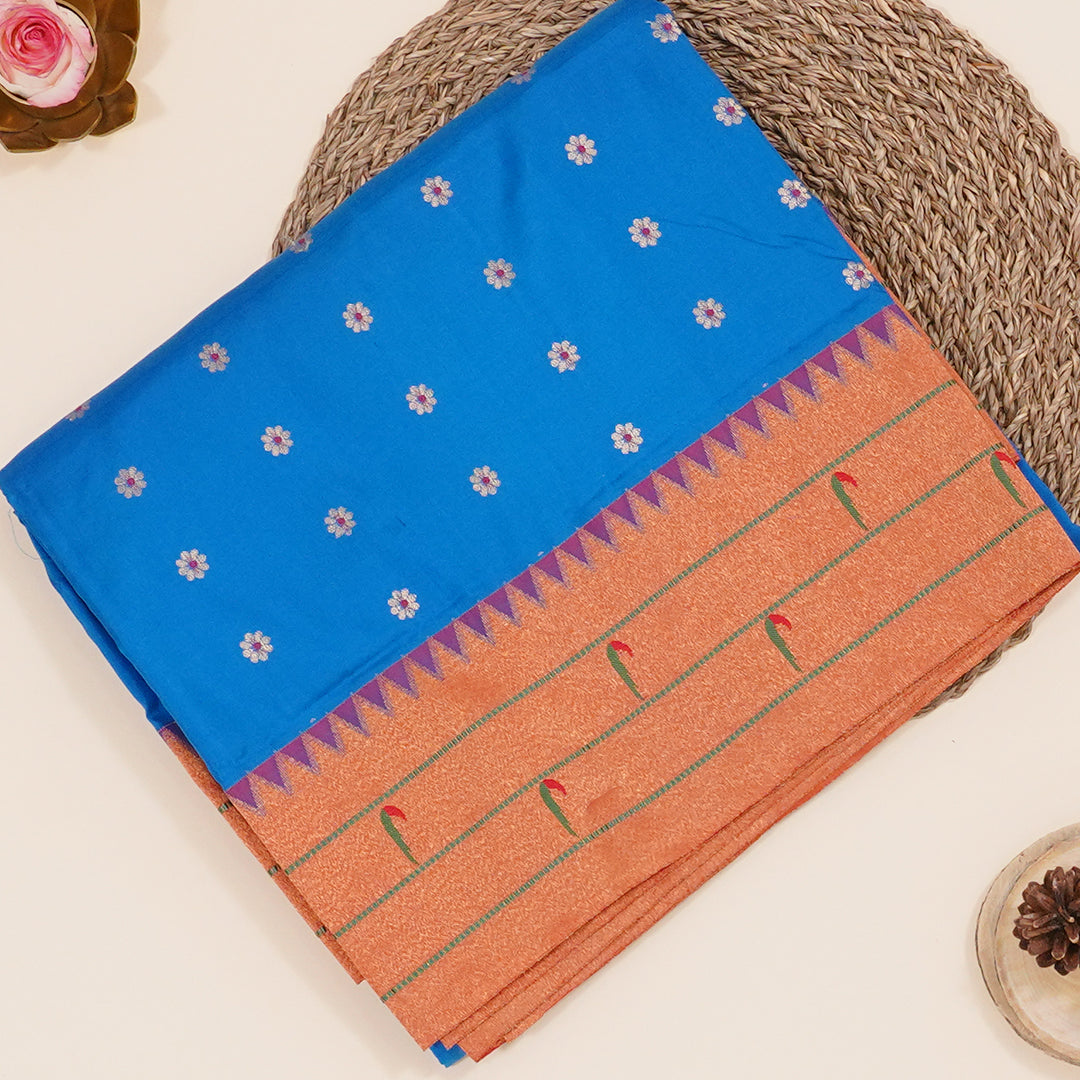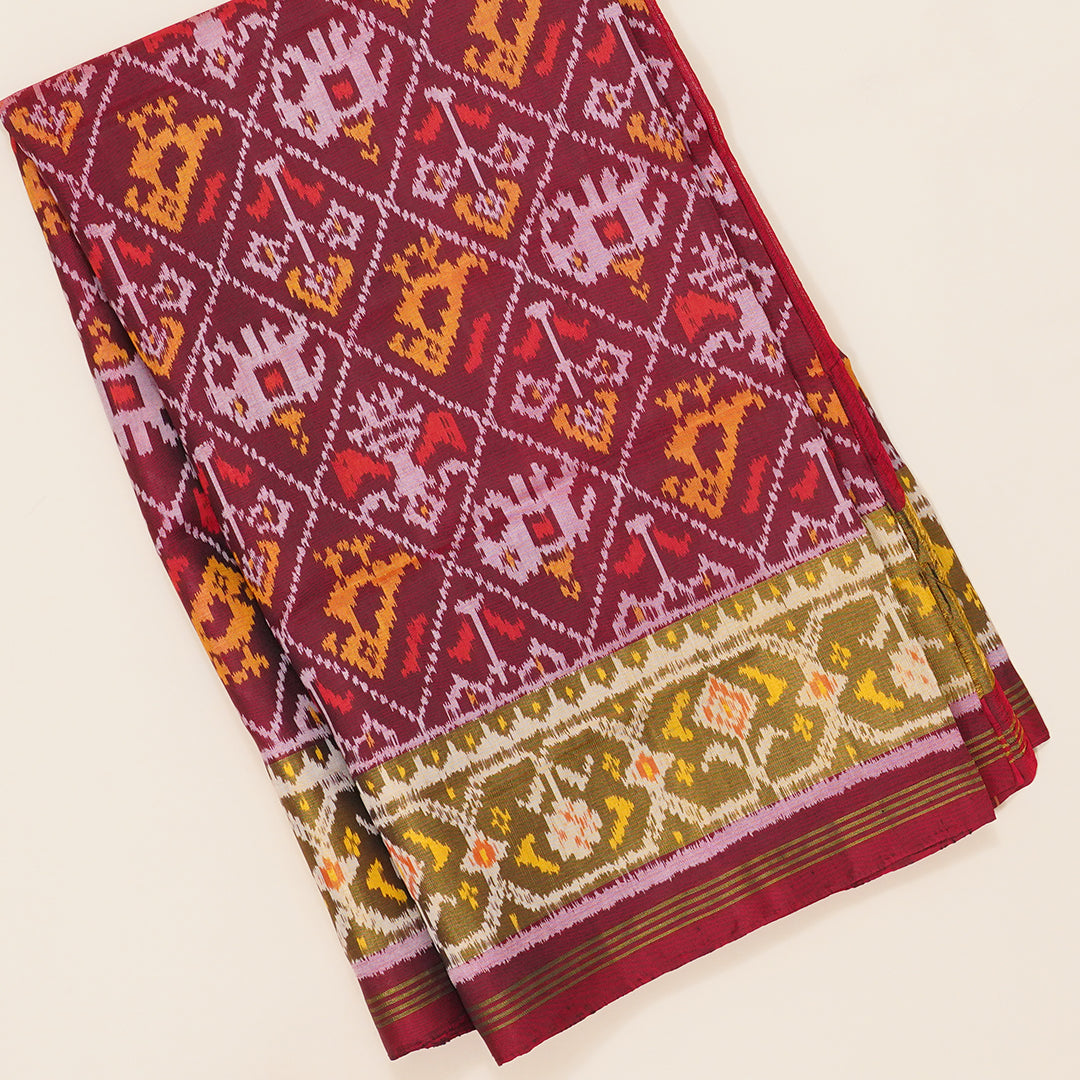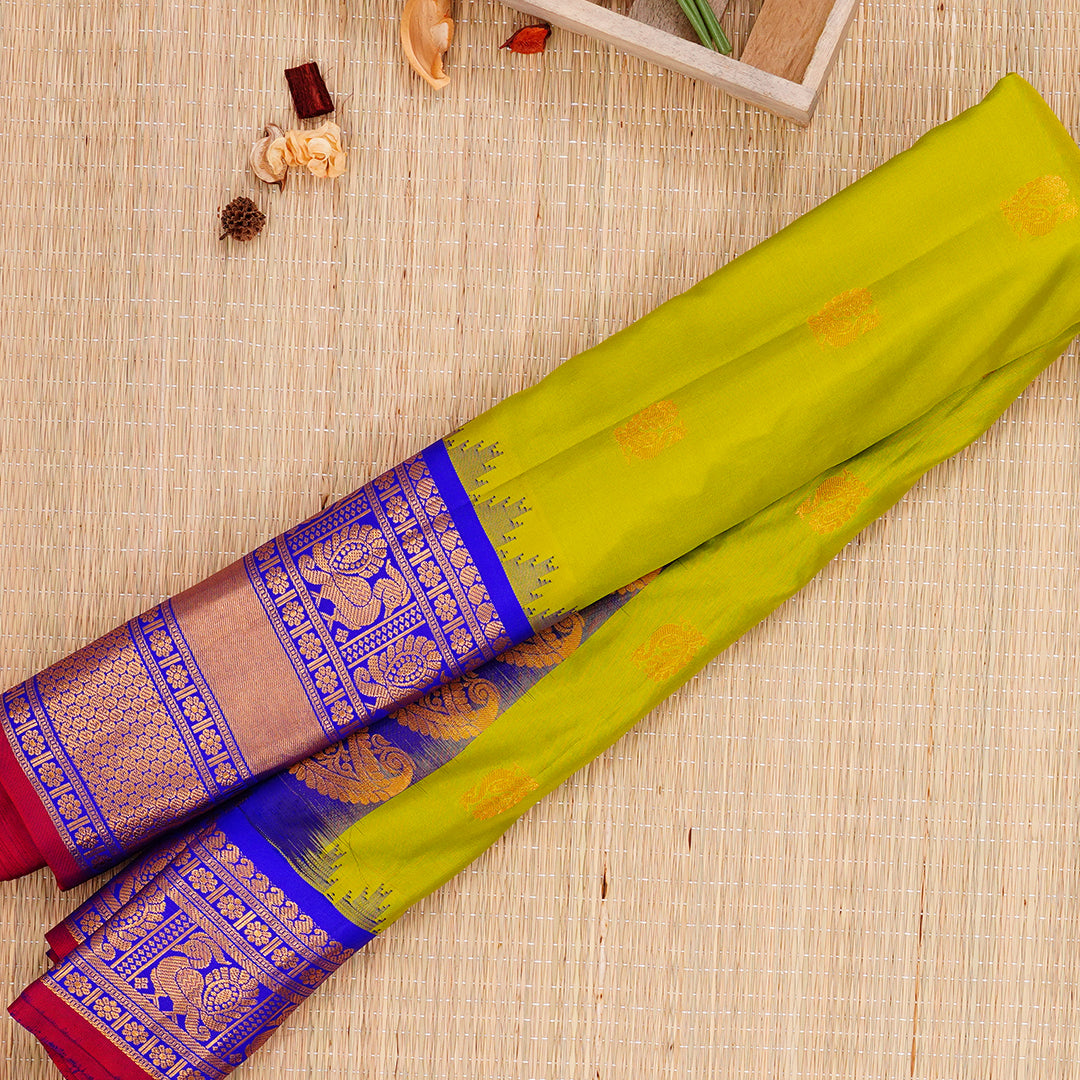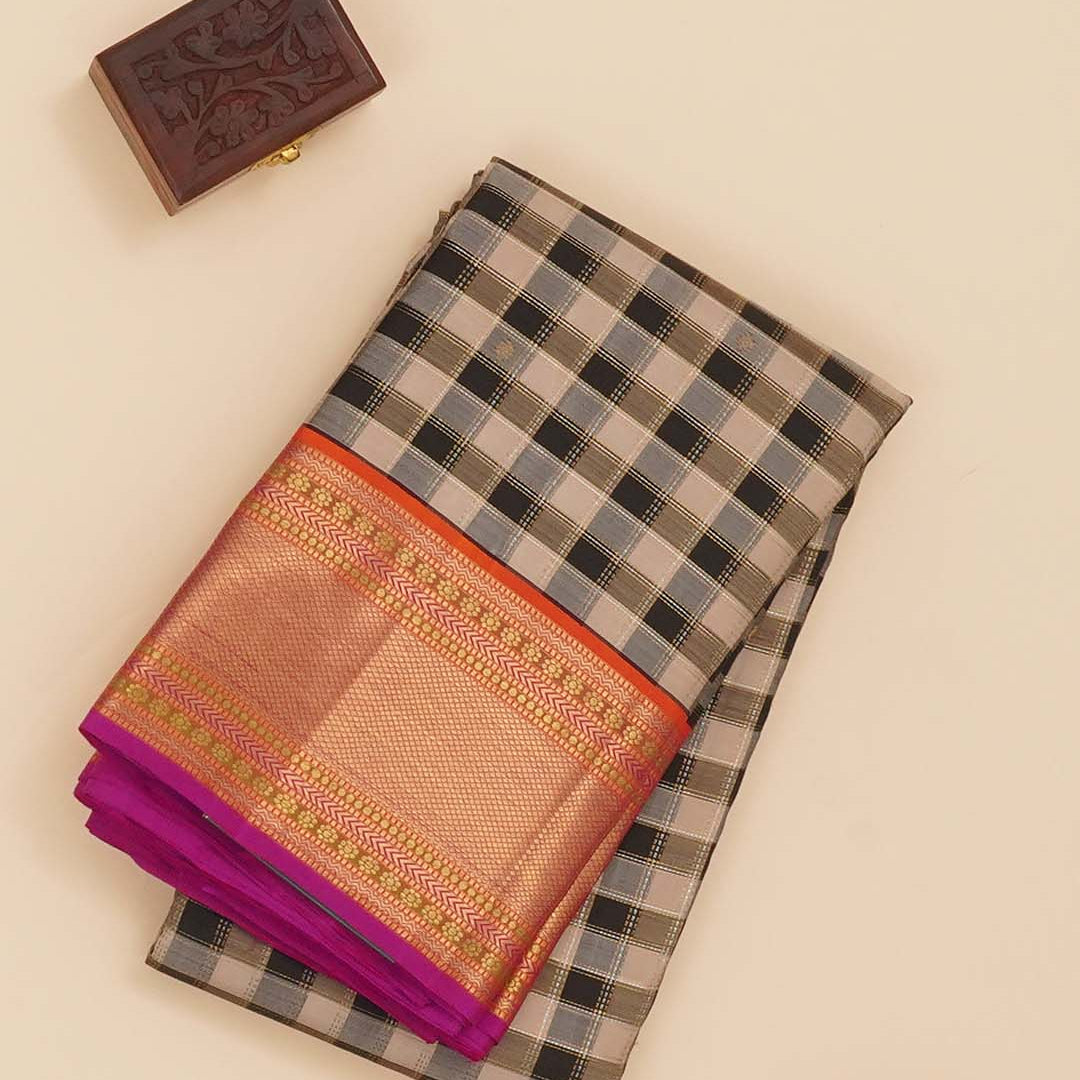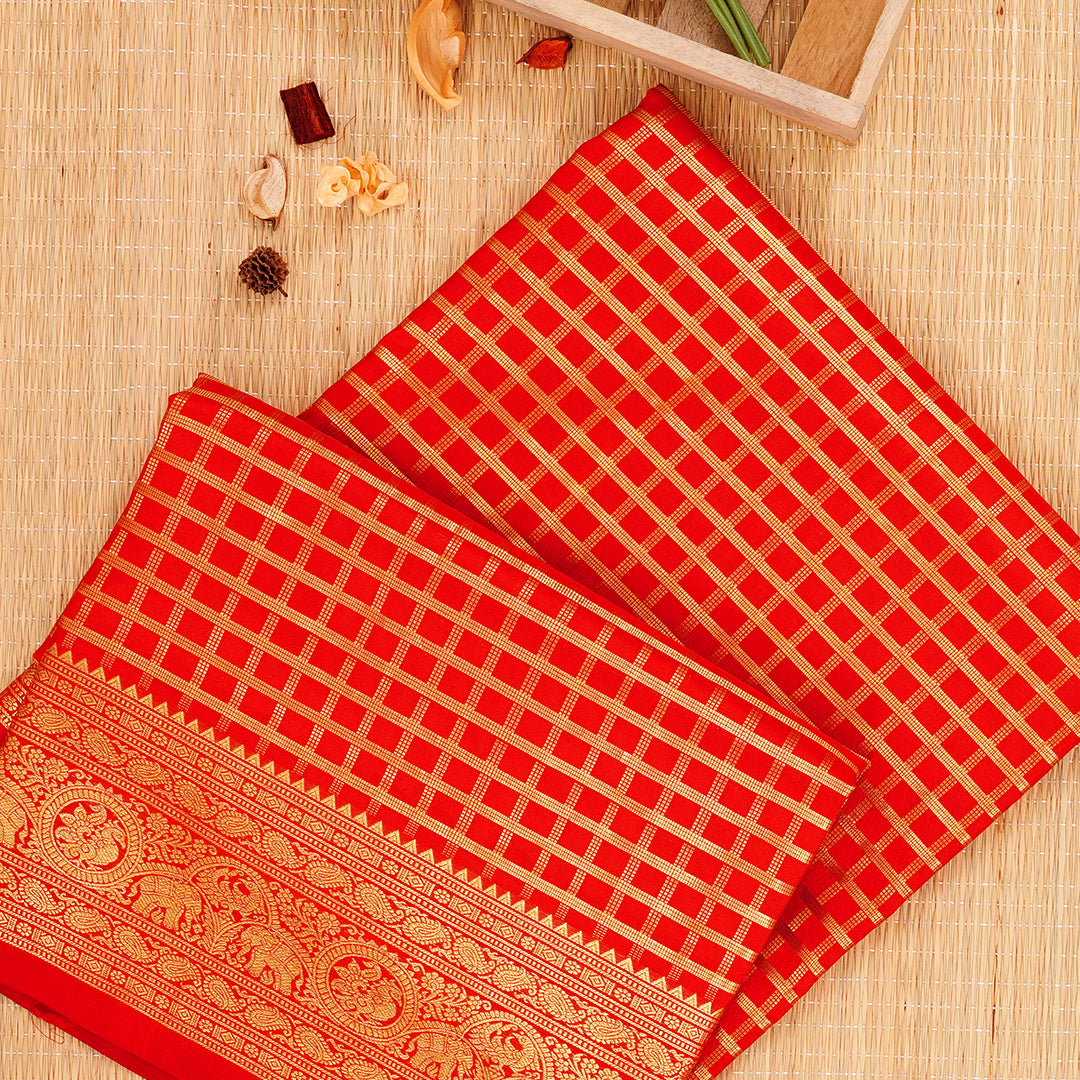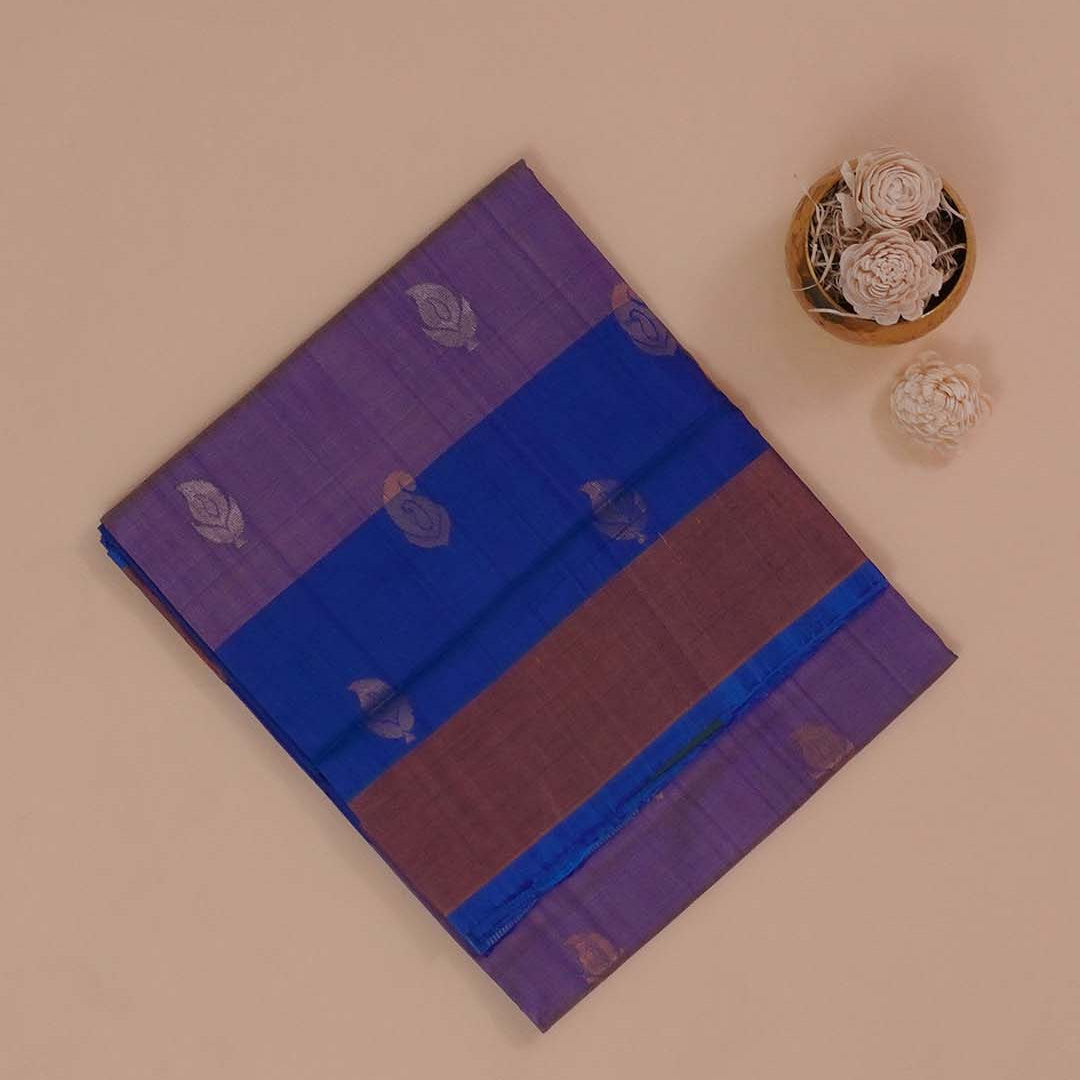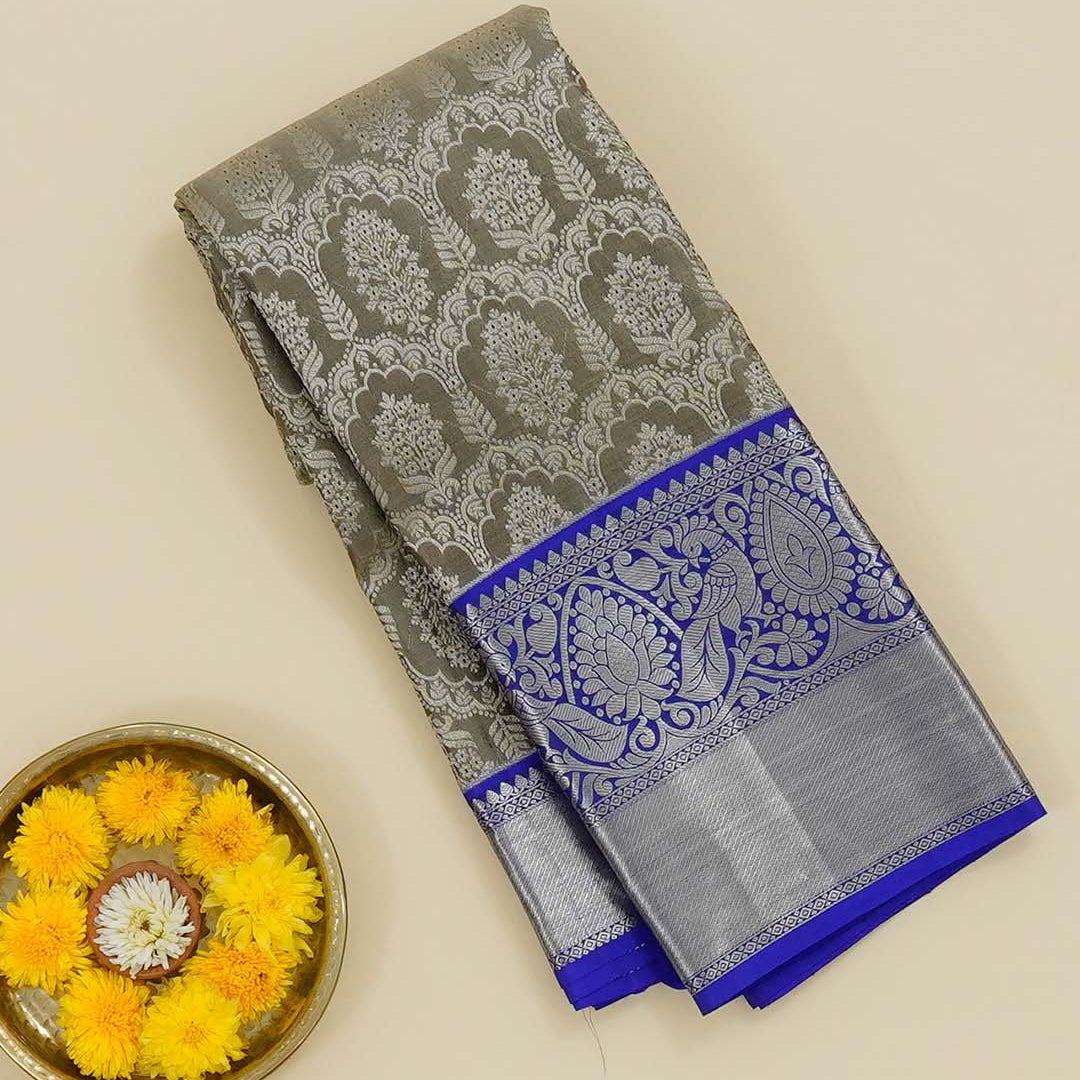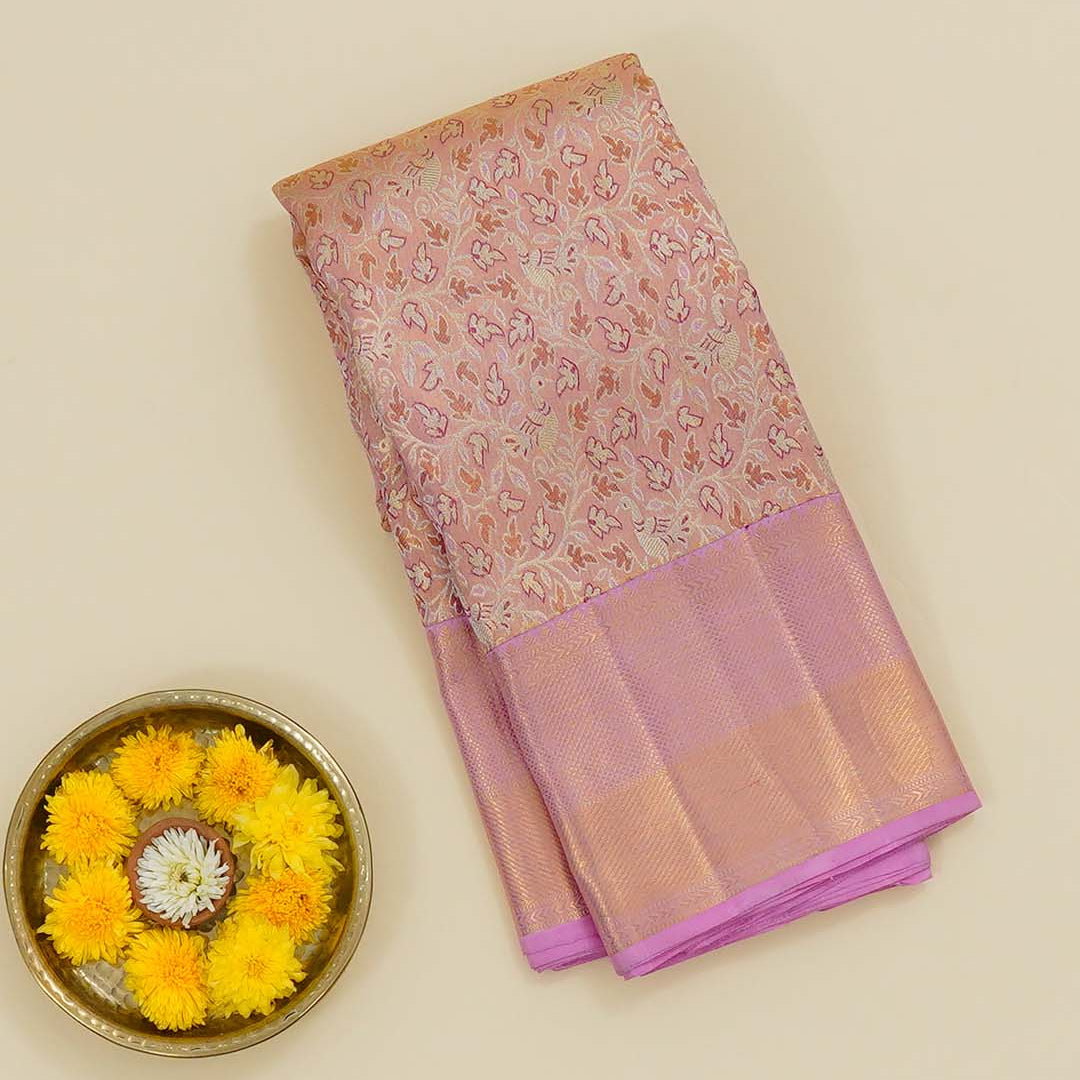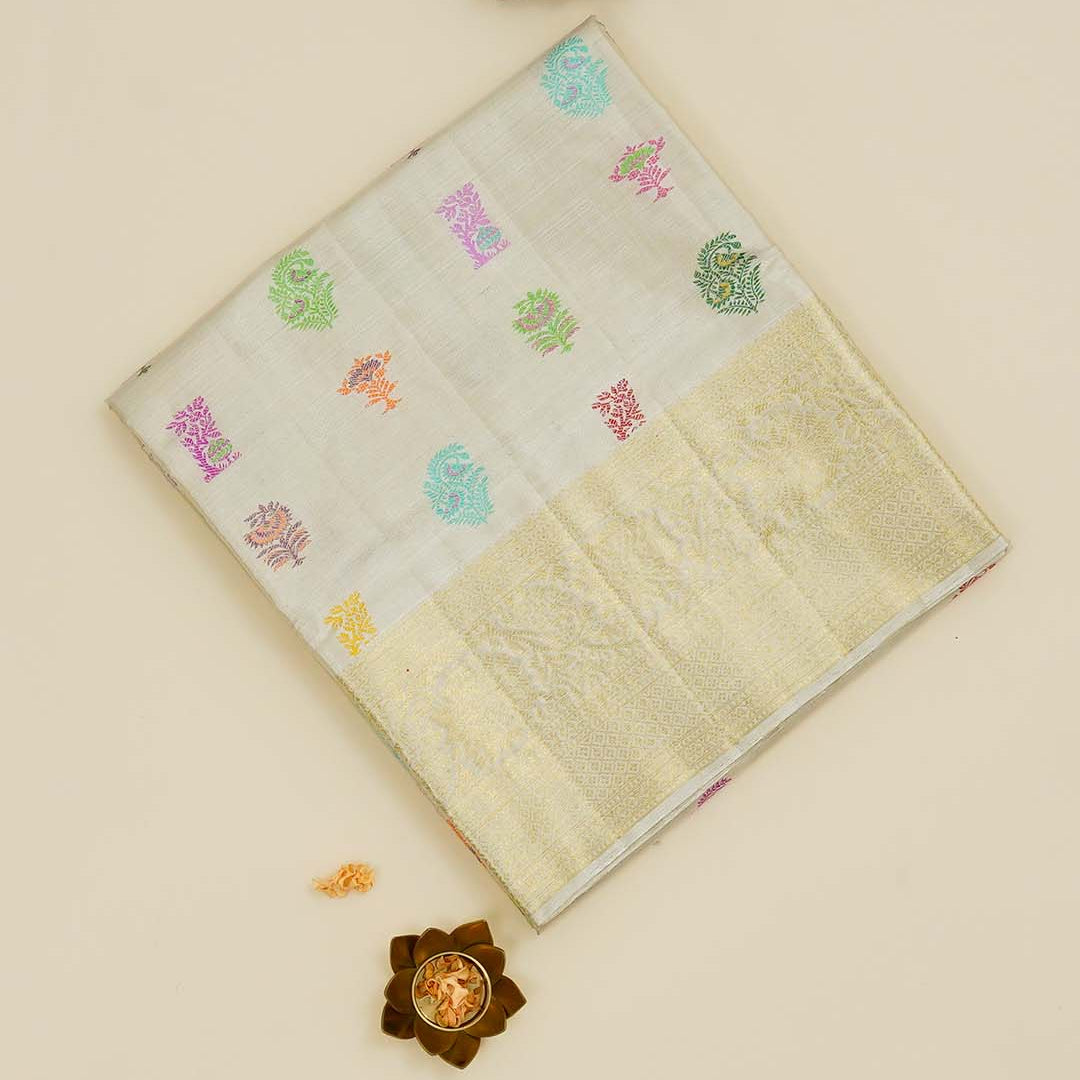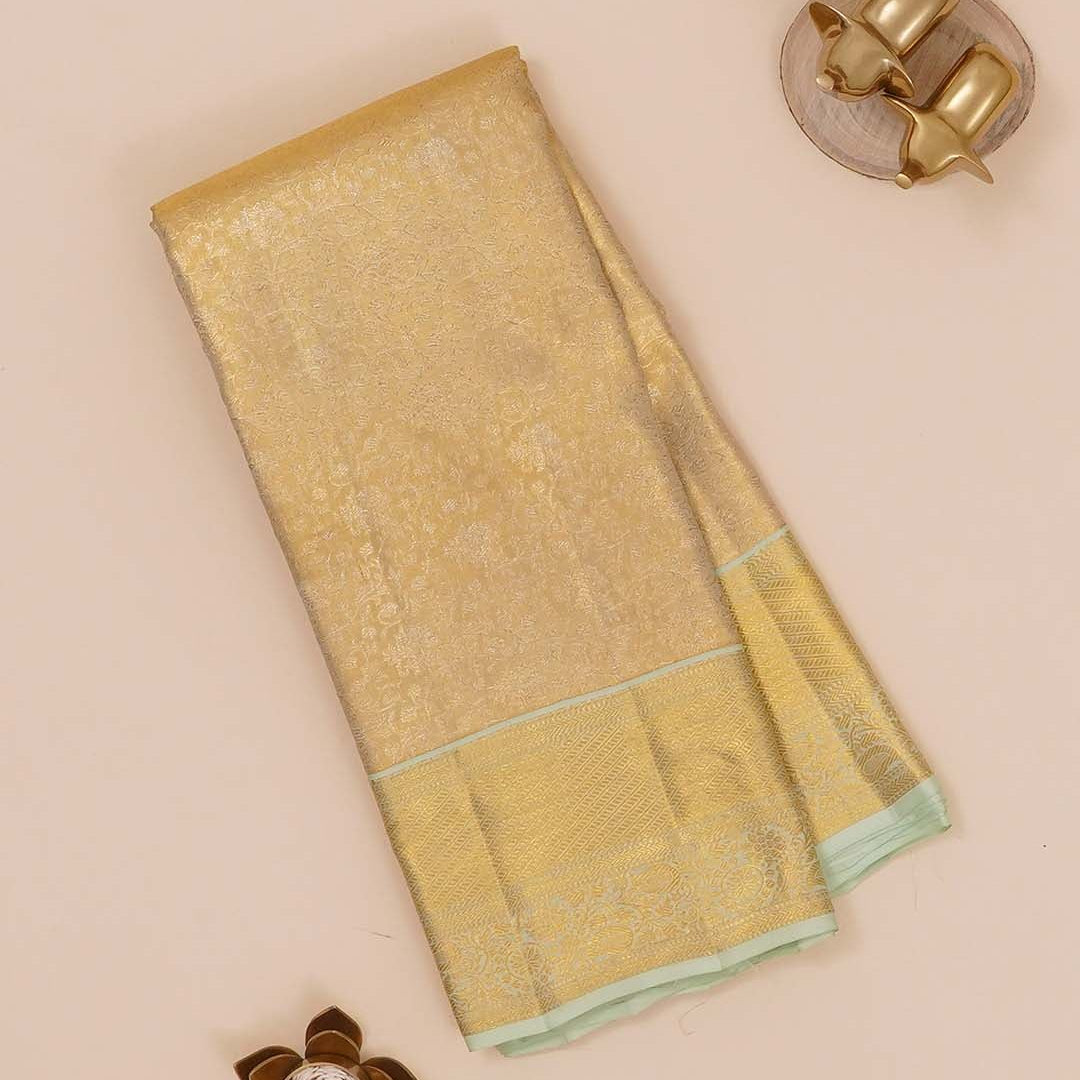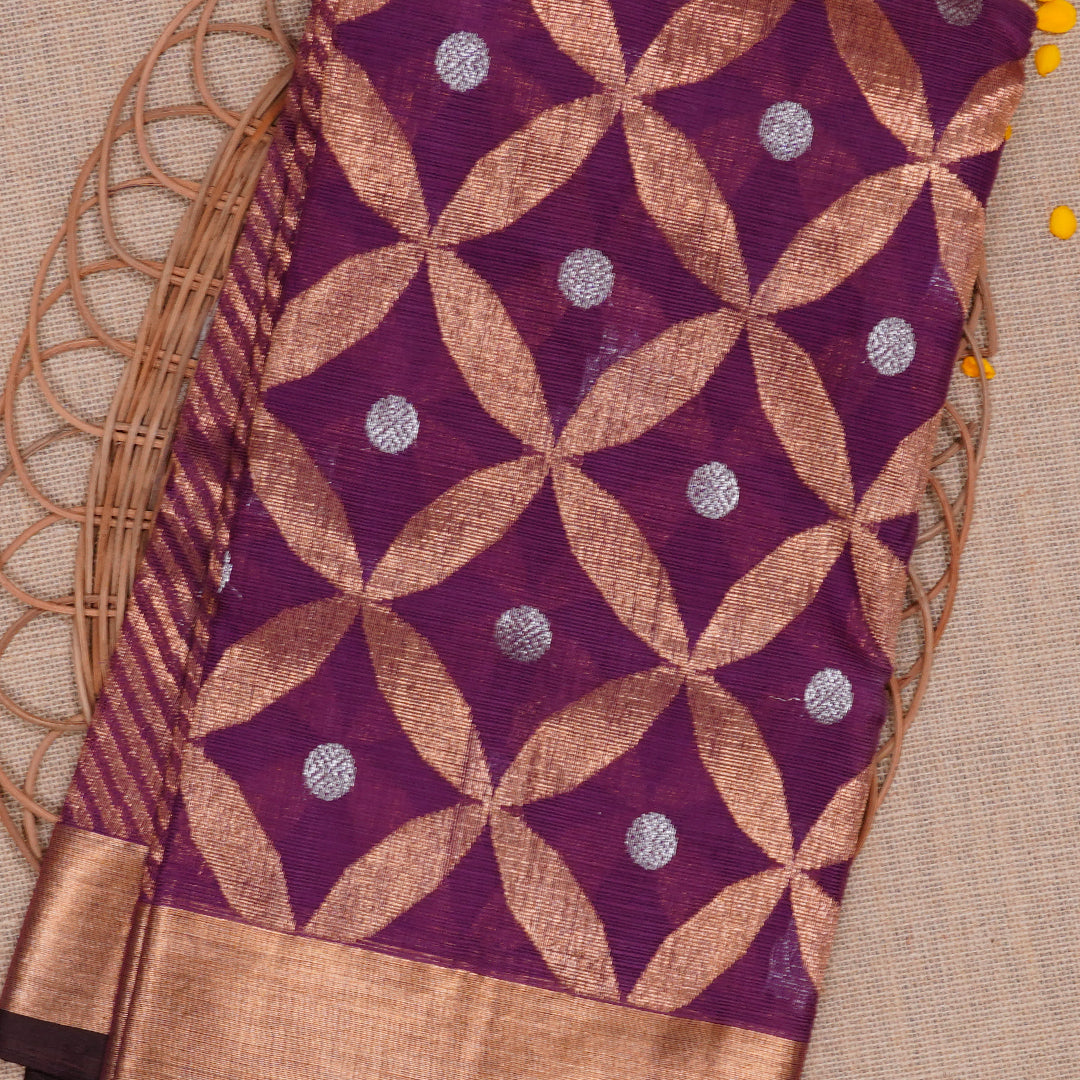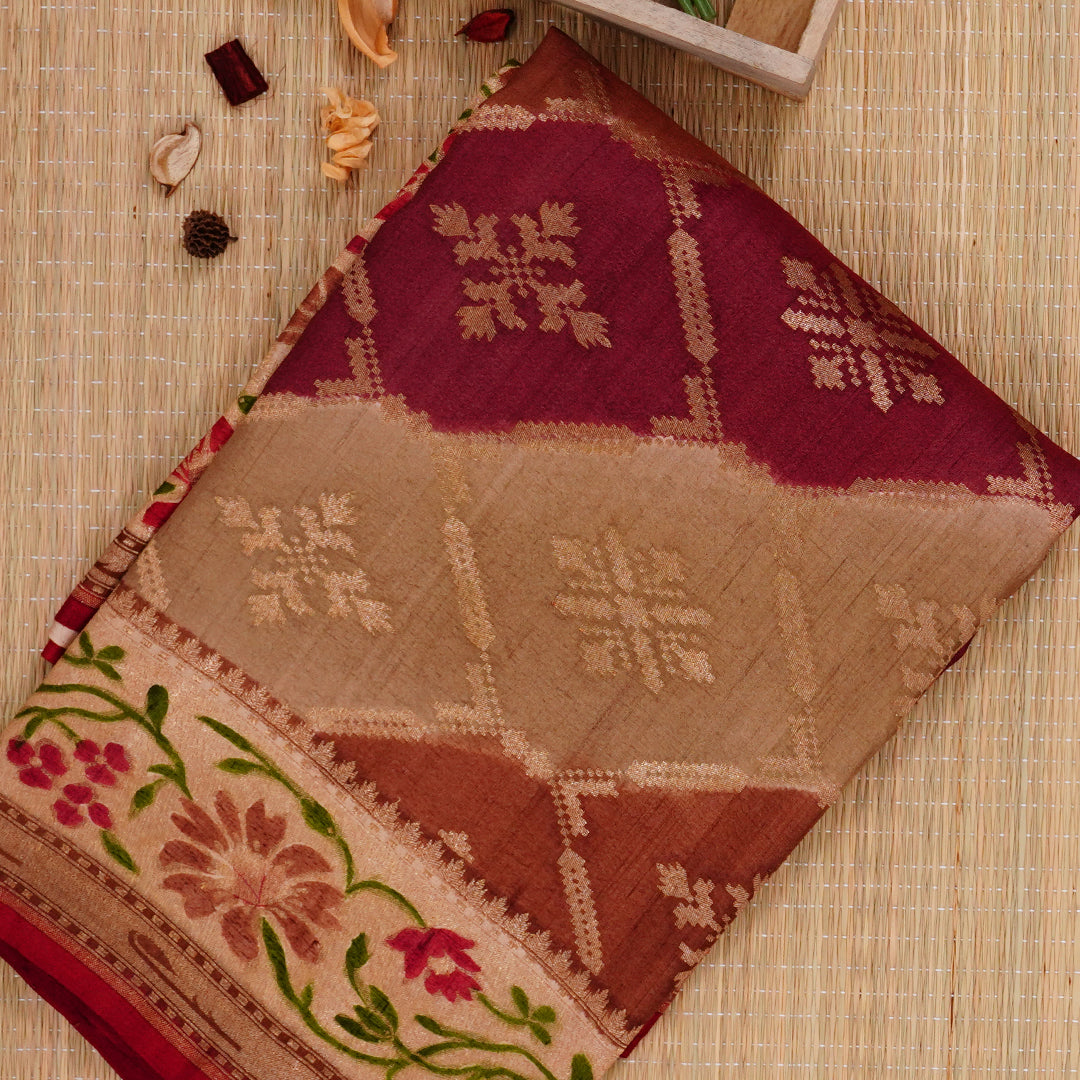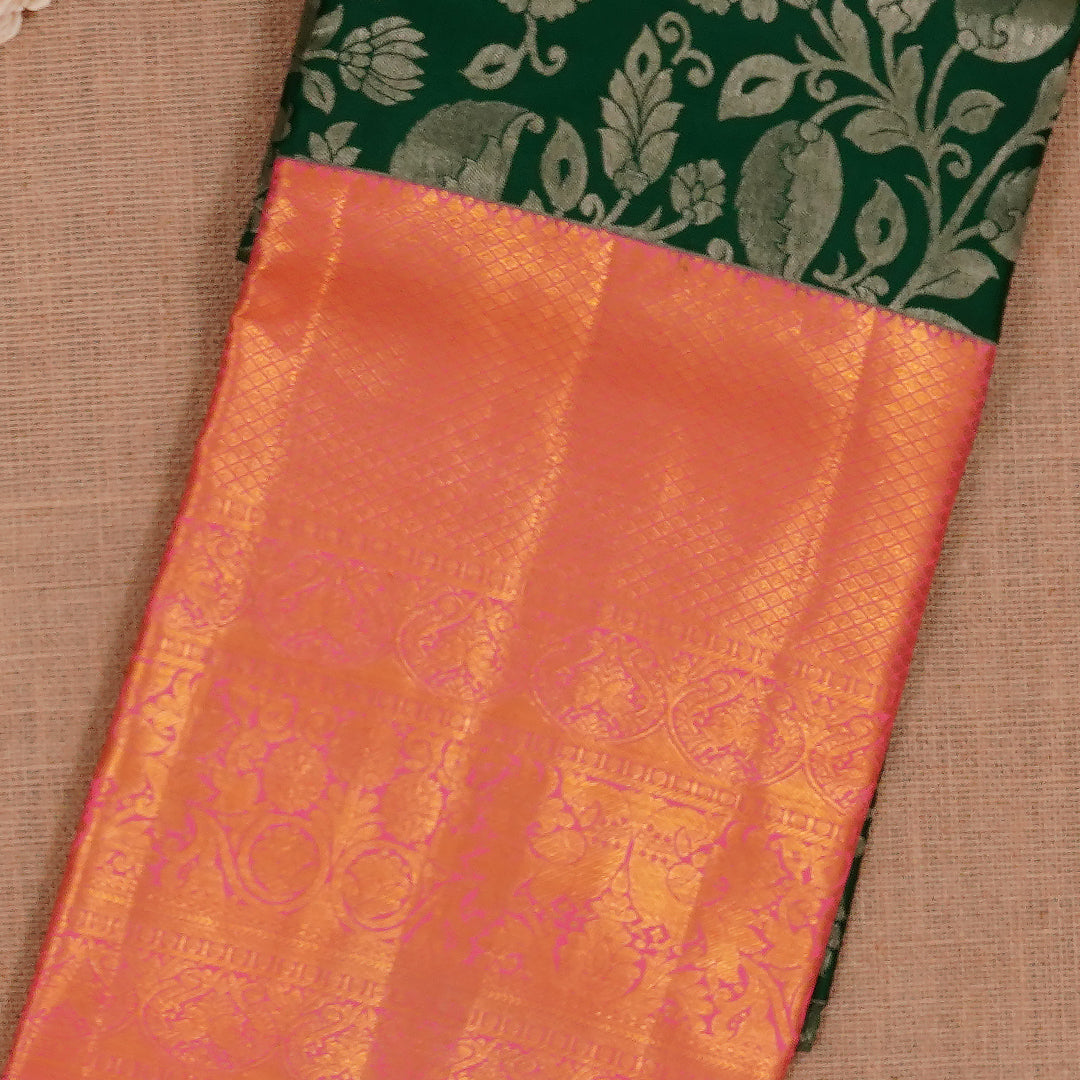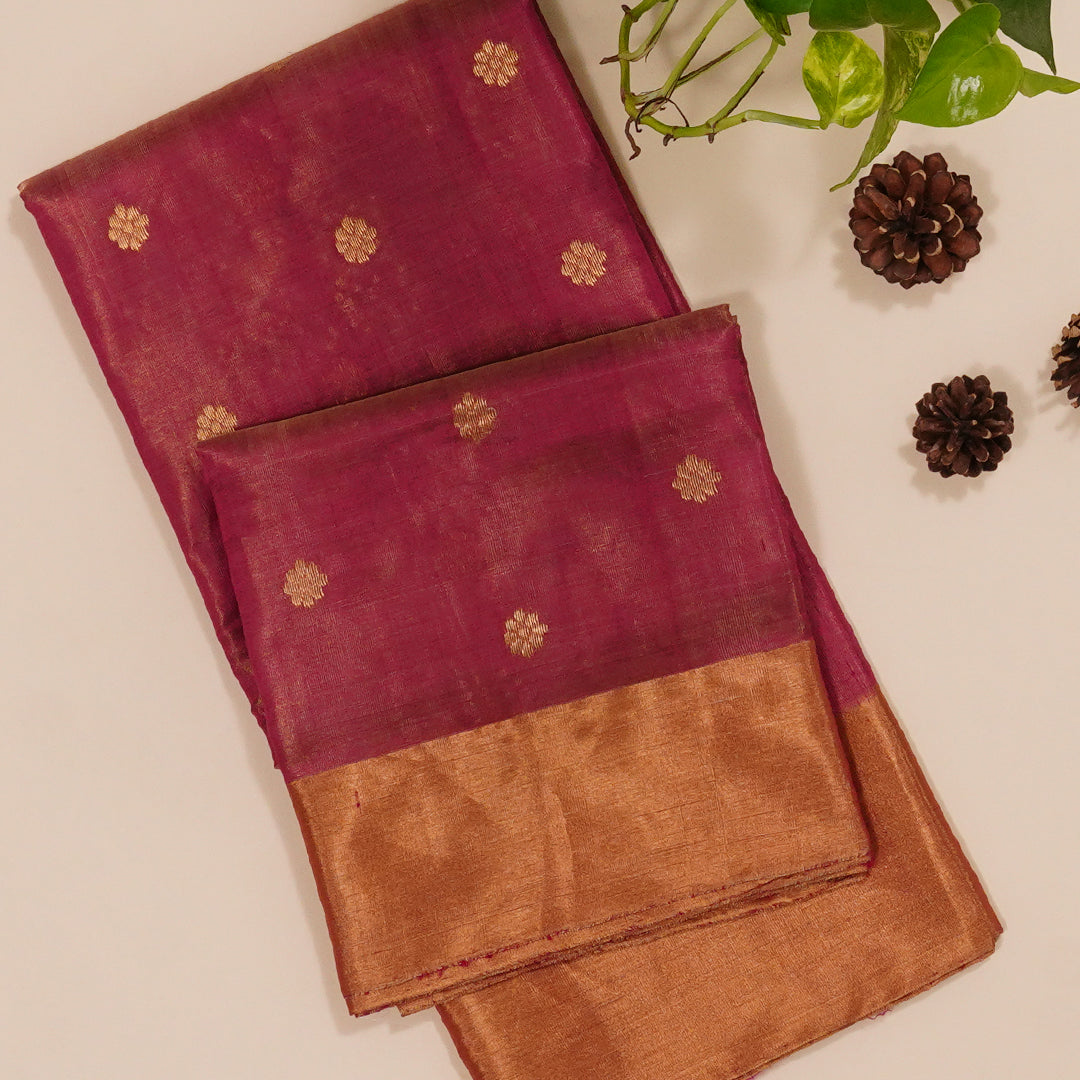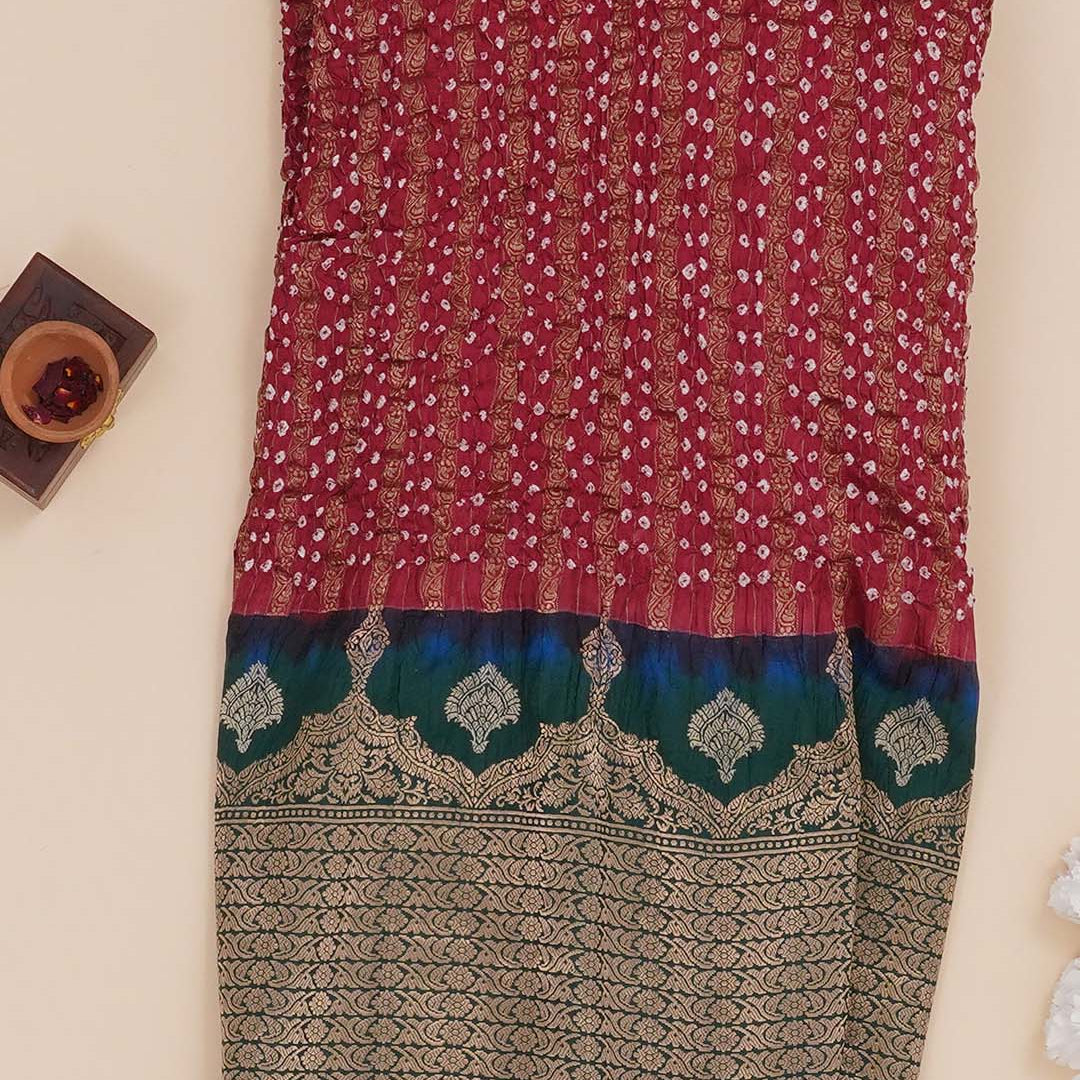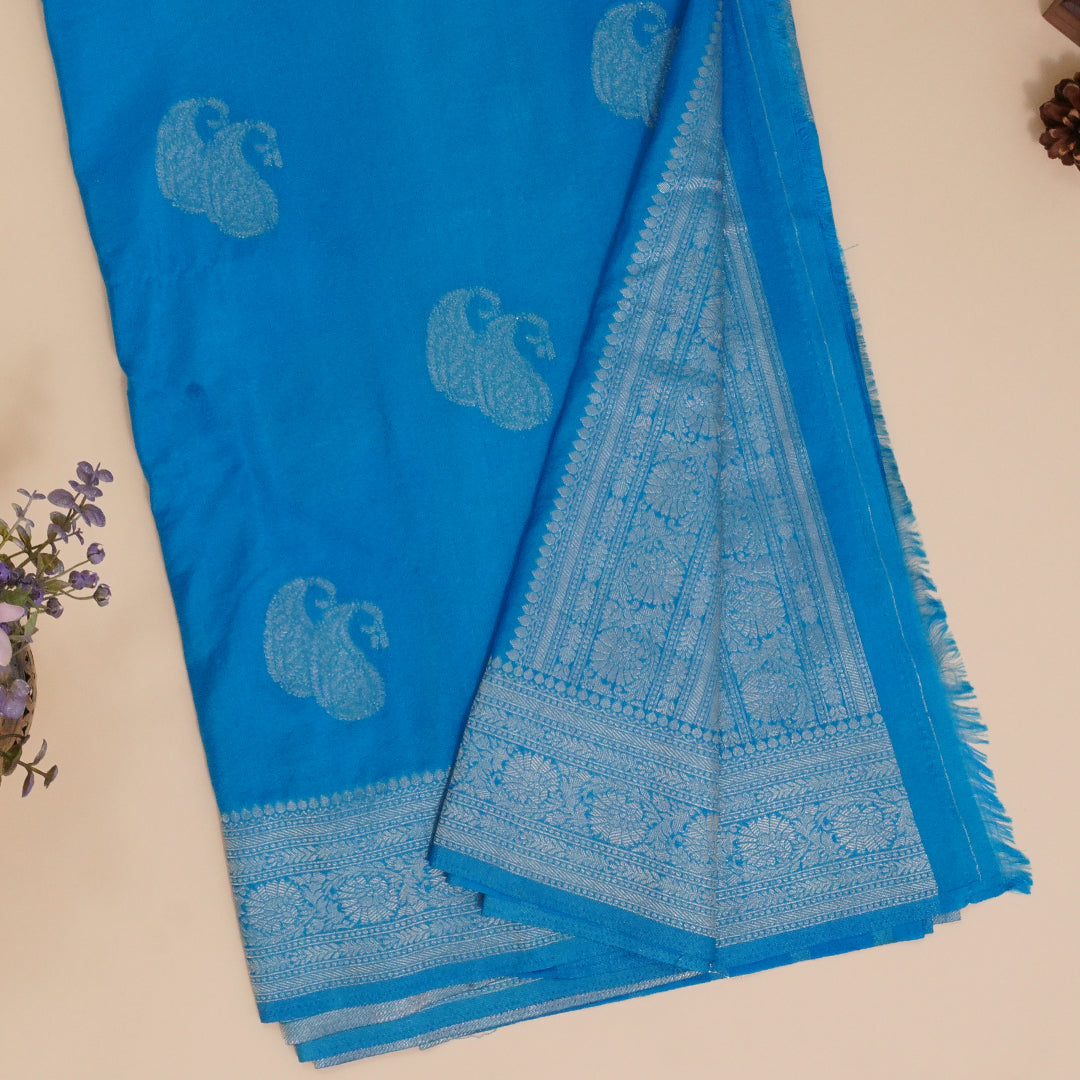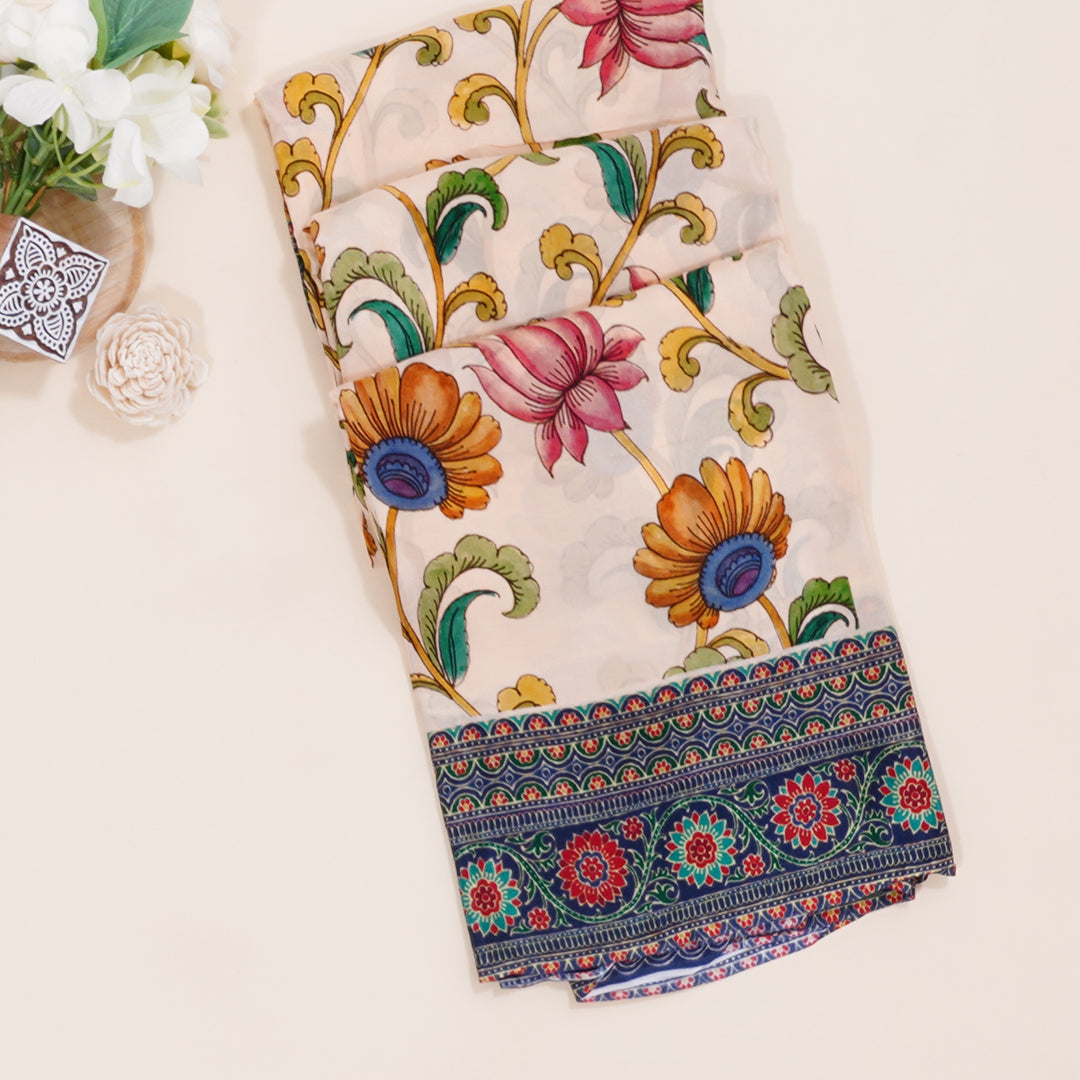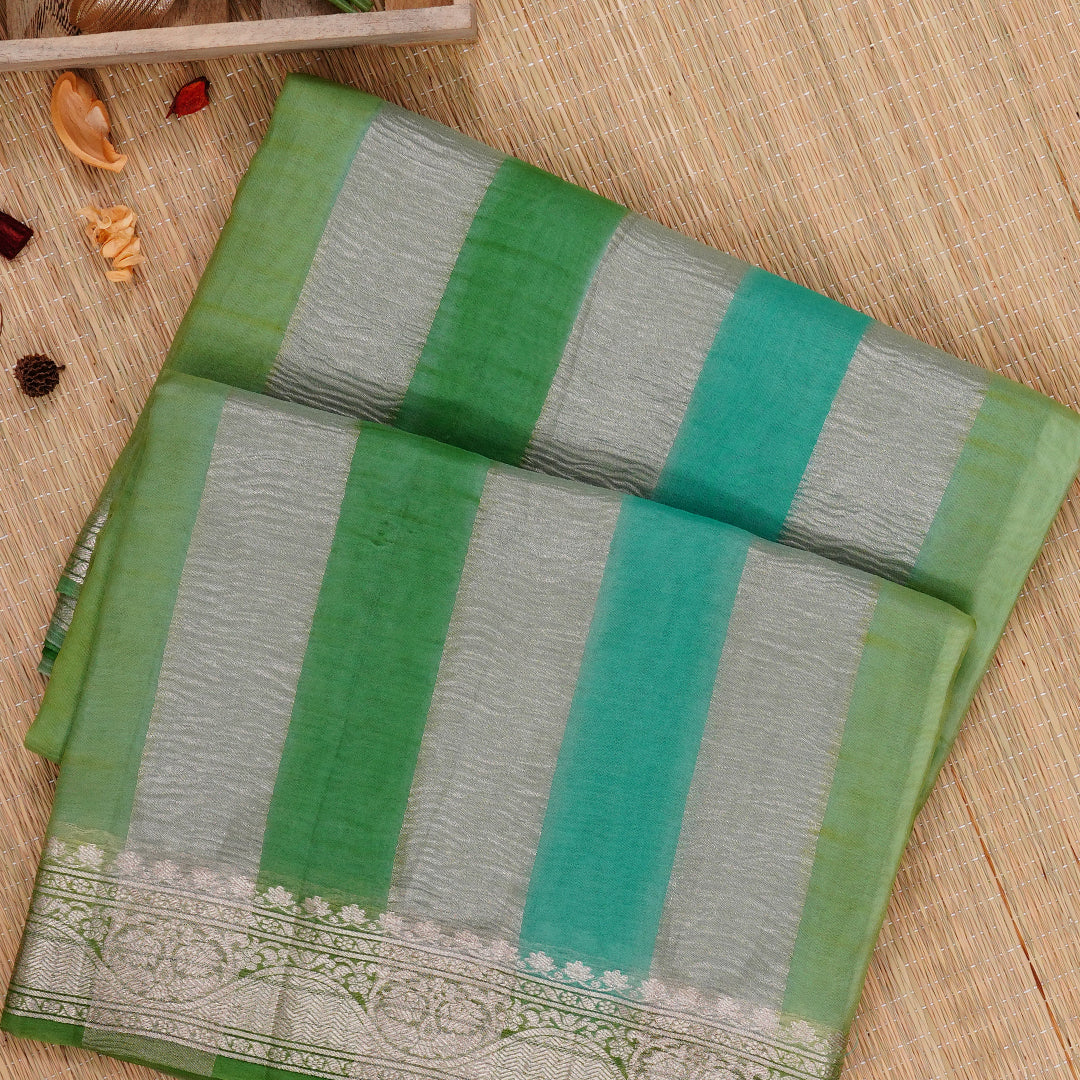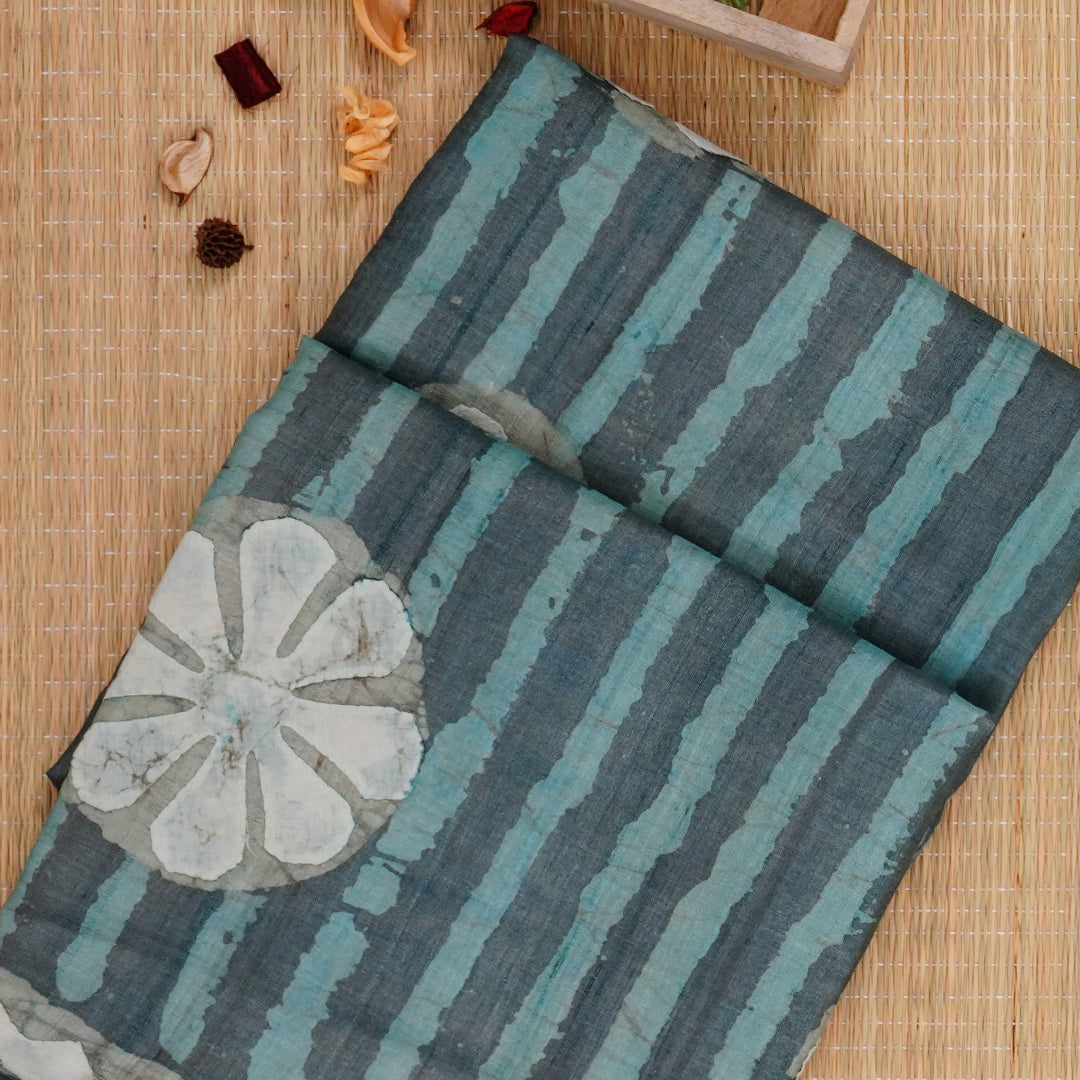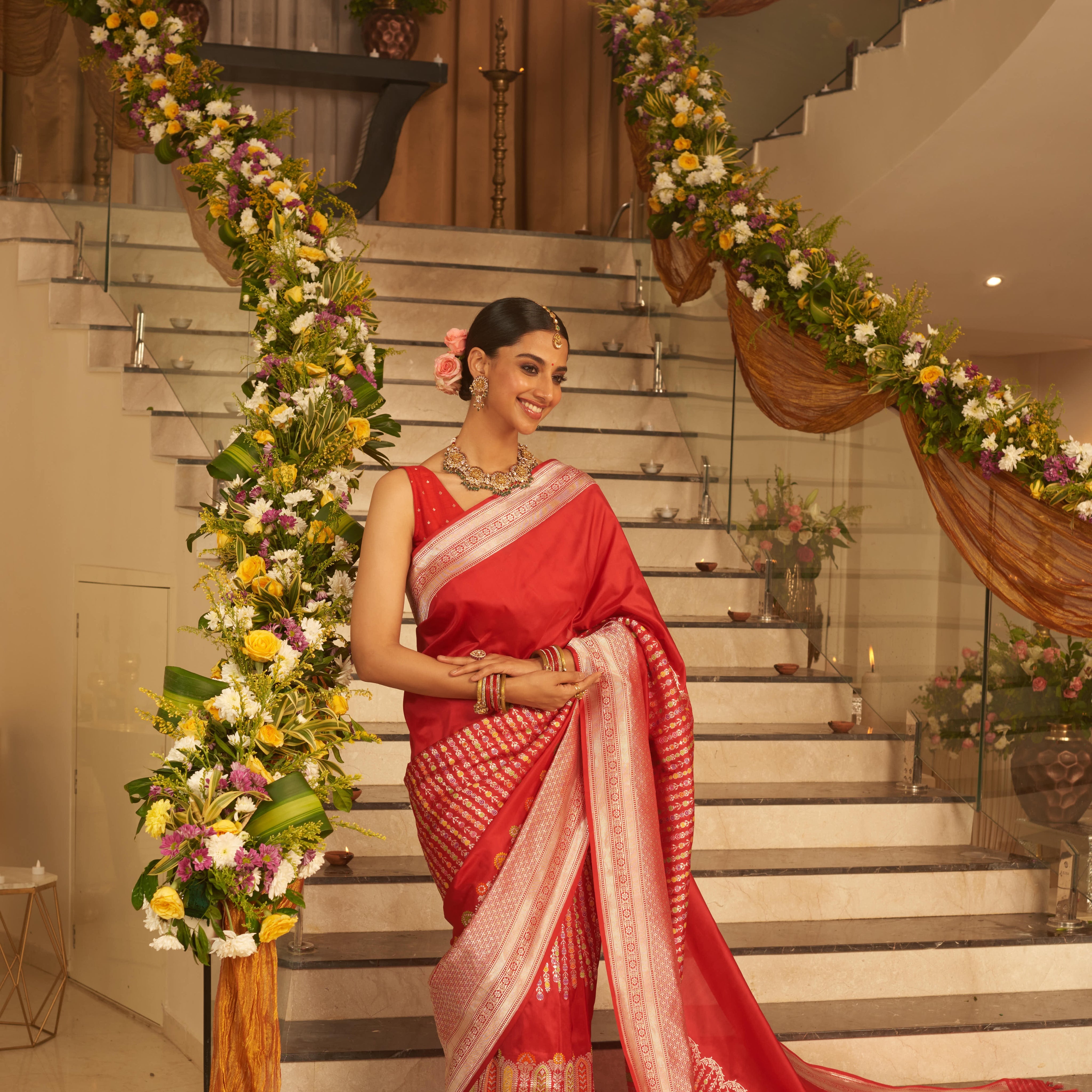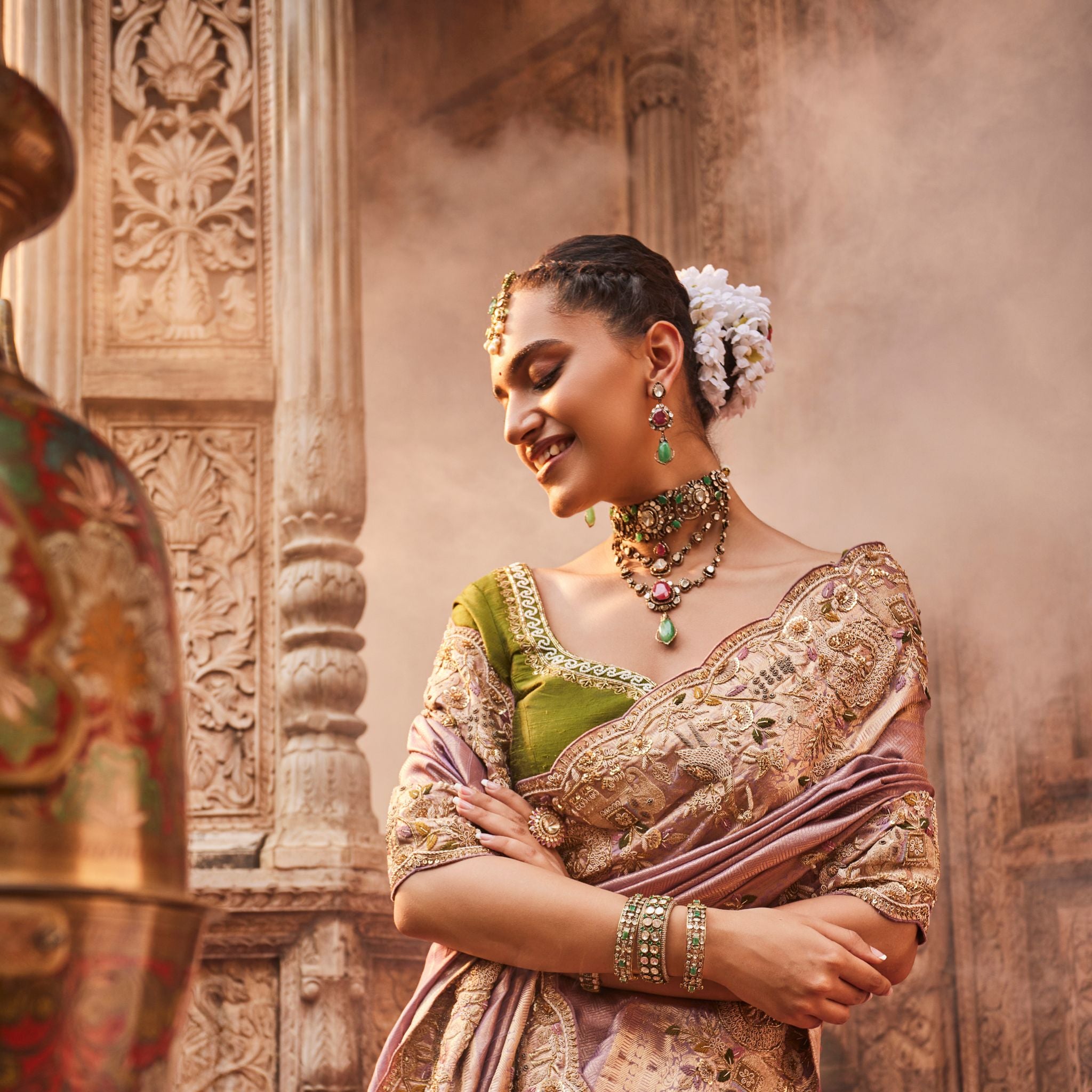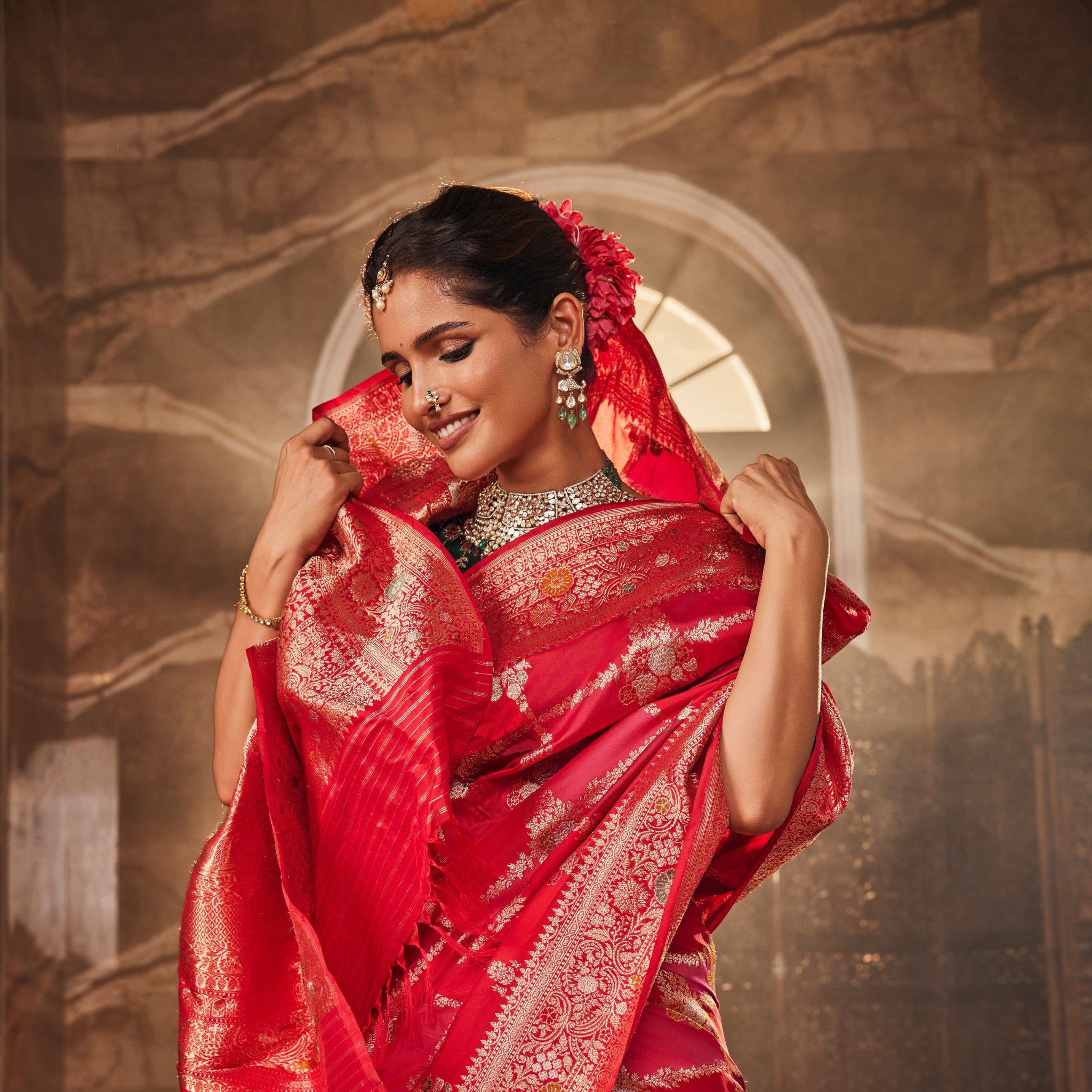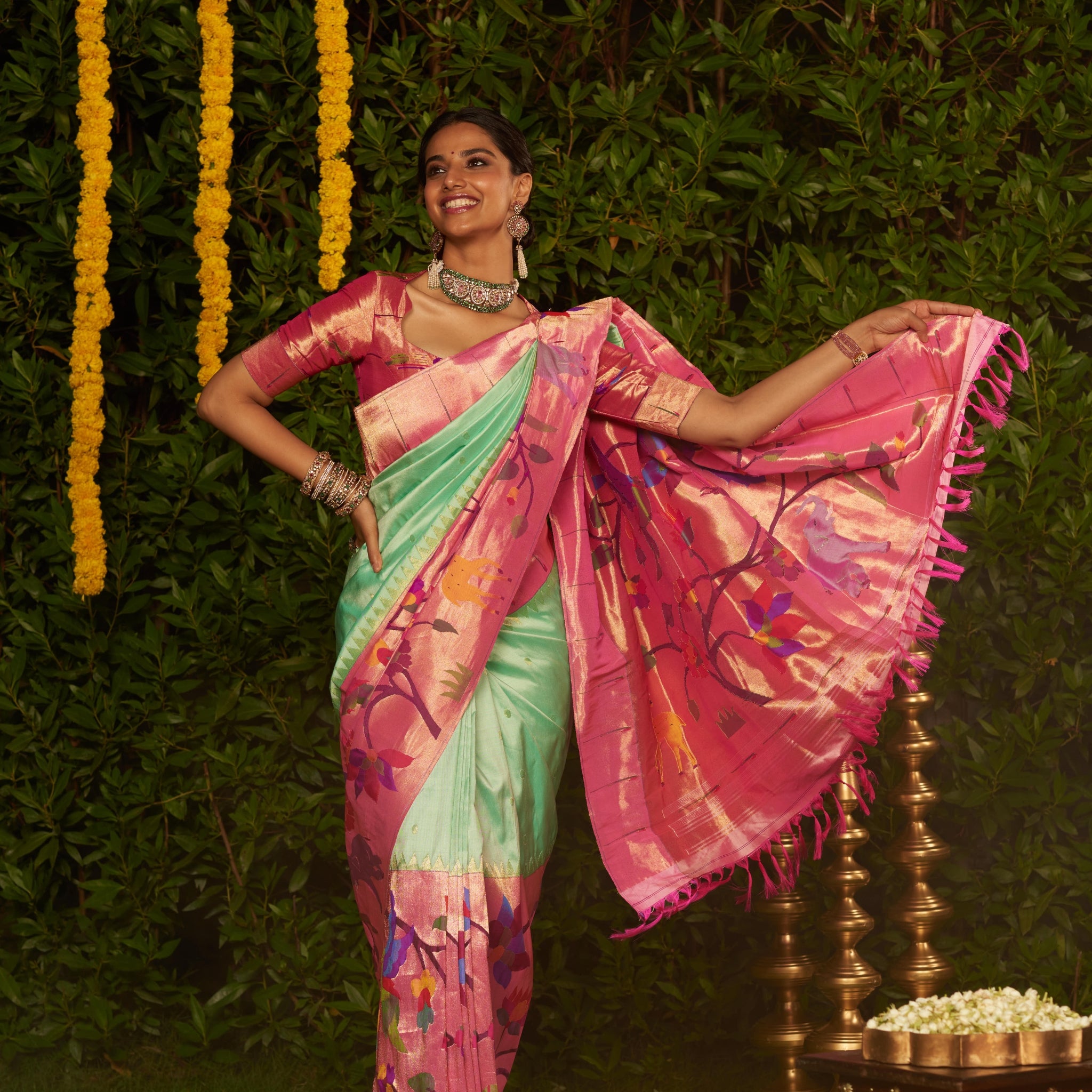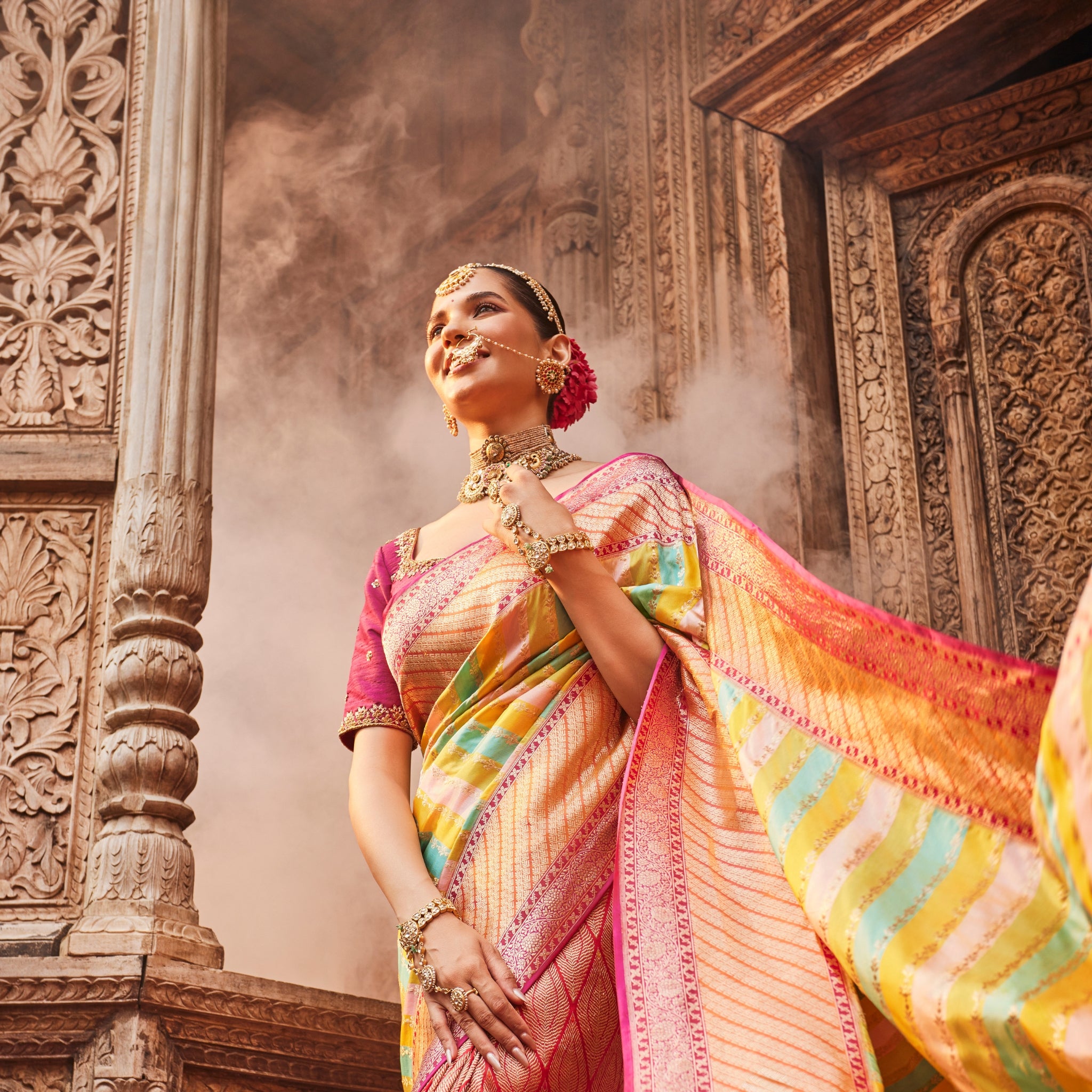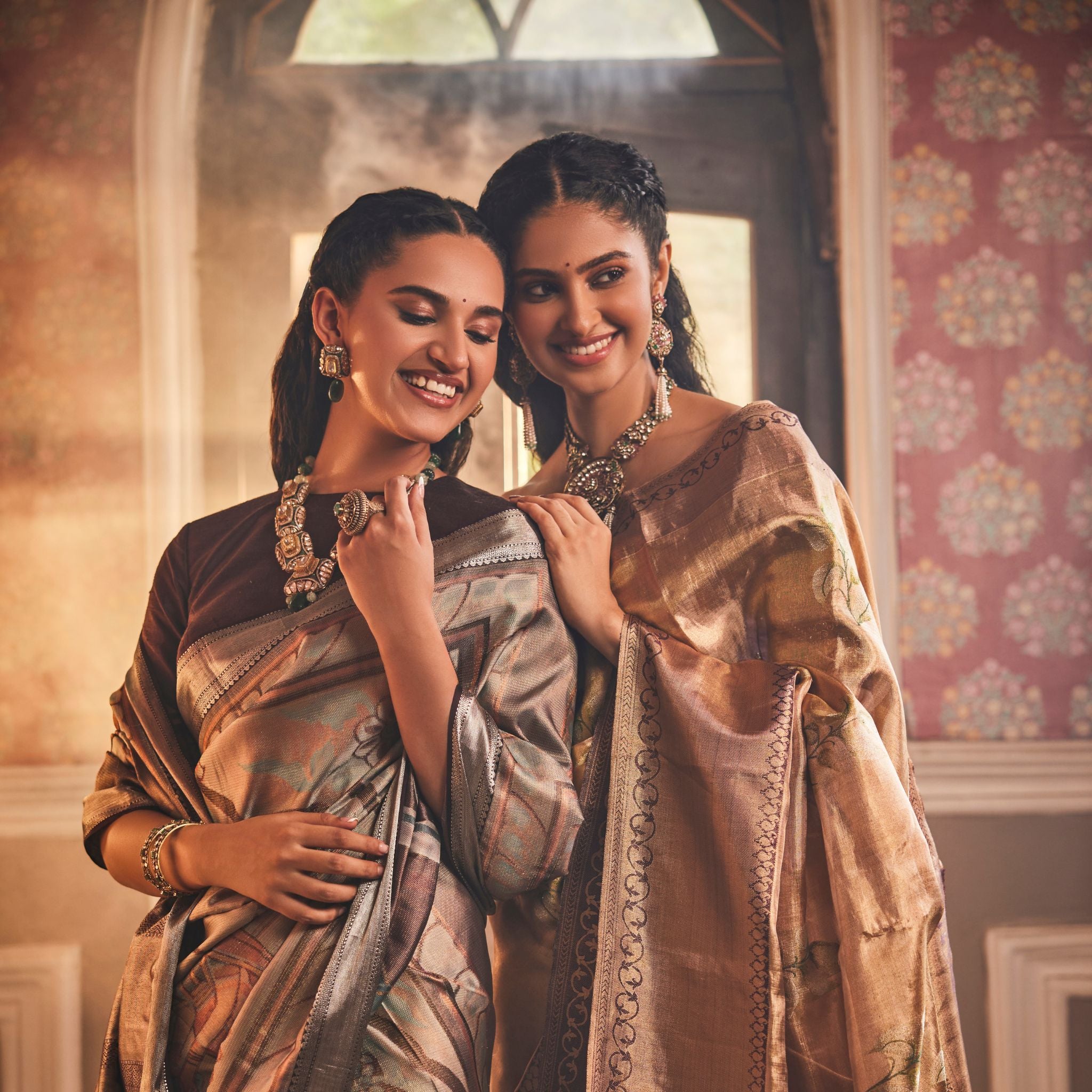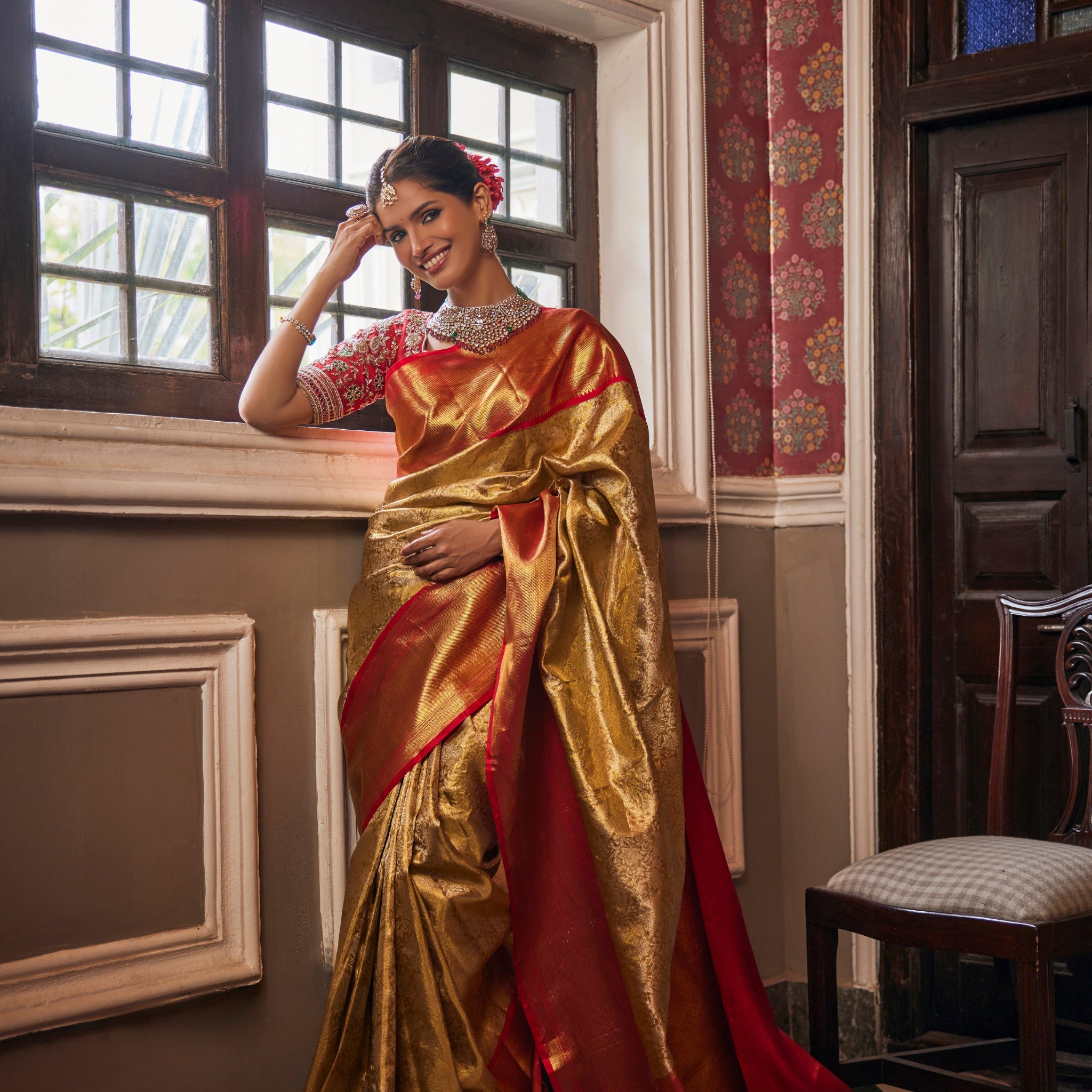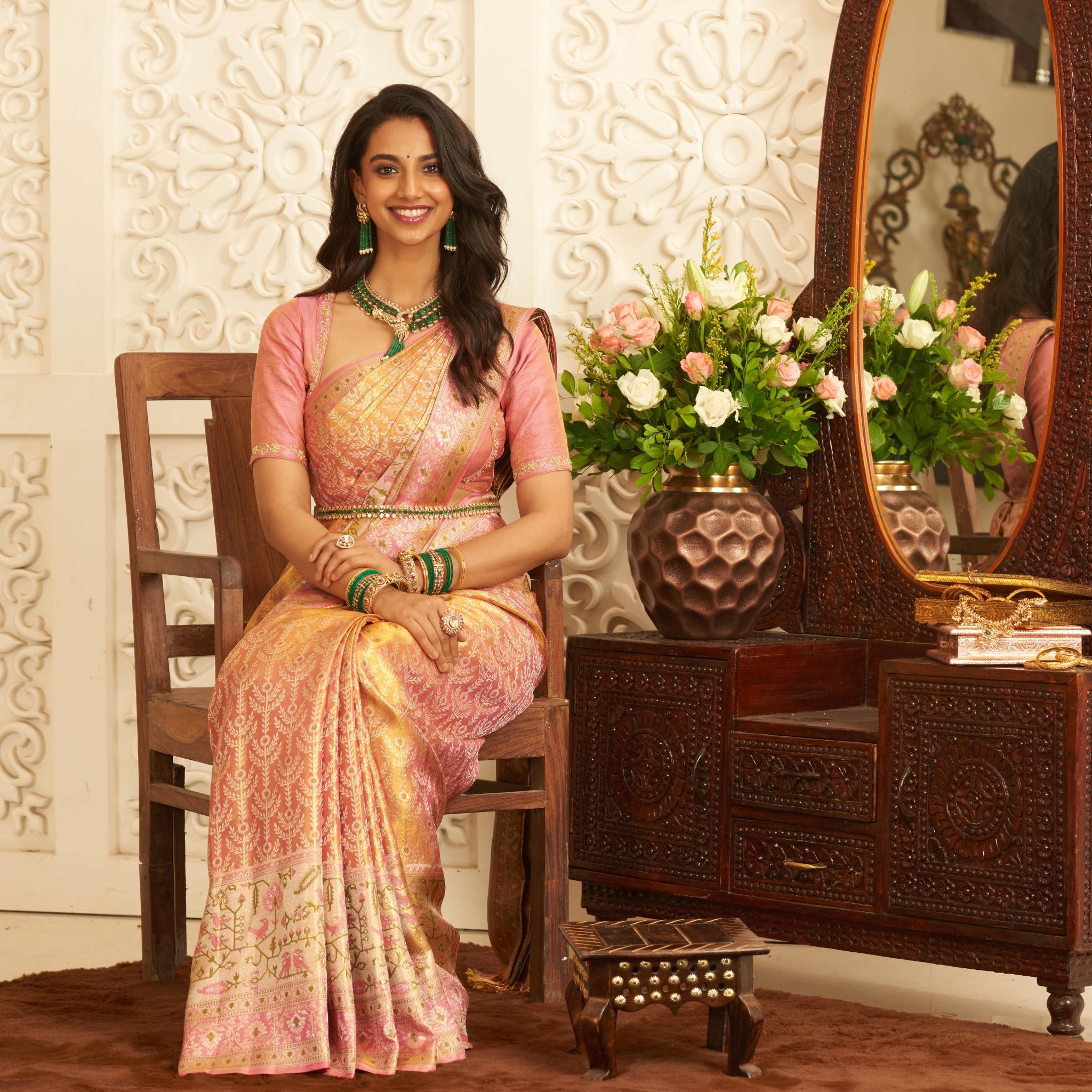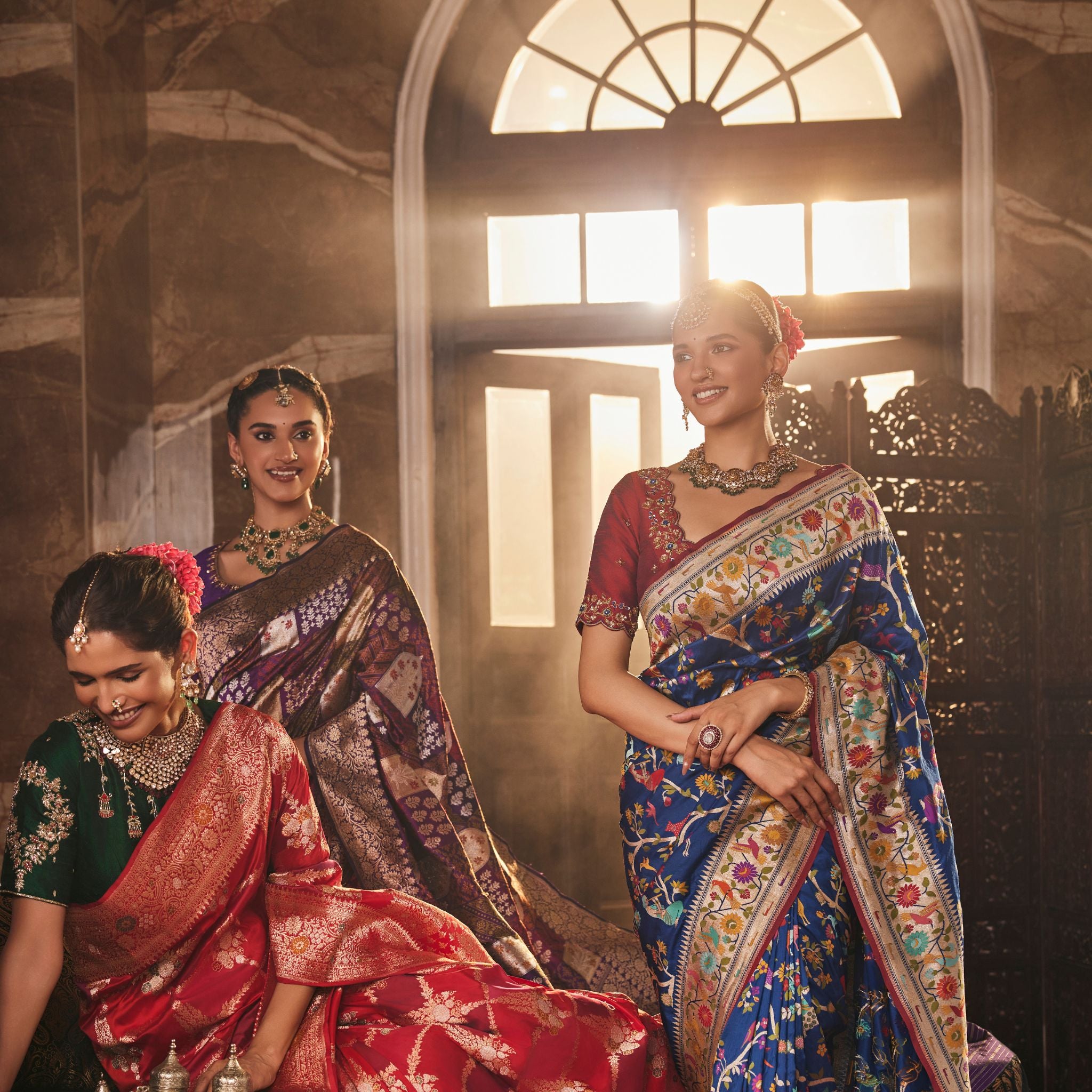Paithani Sarees: A Royal Legacy Woven in Gold & Silk | Vaarahi Silks
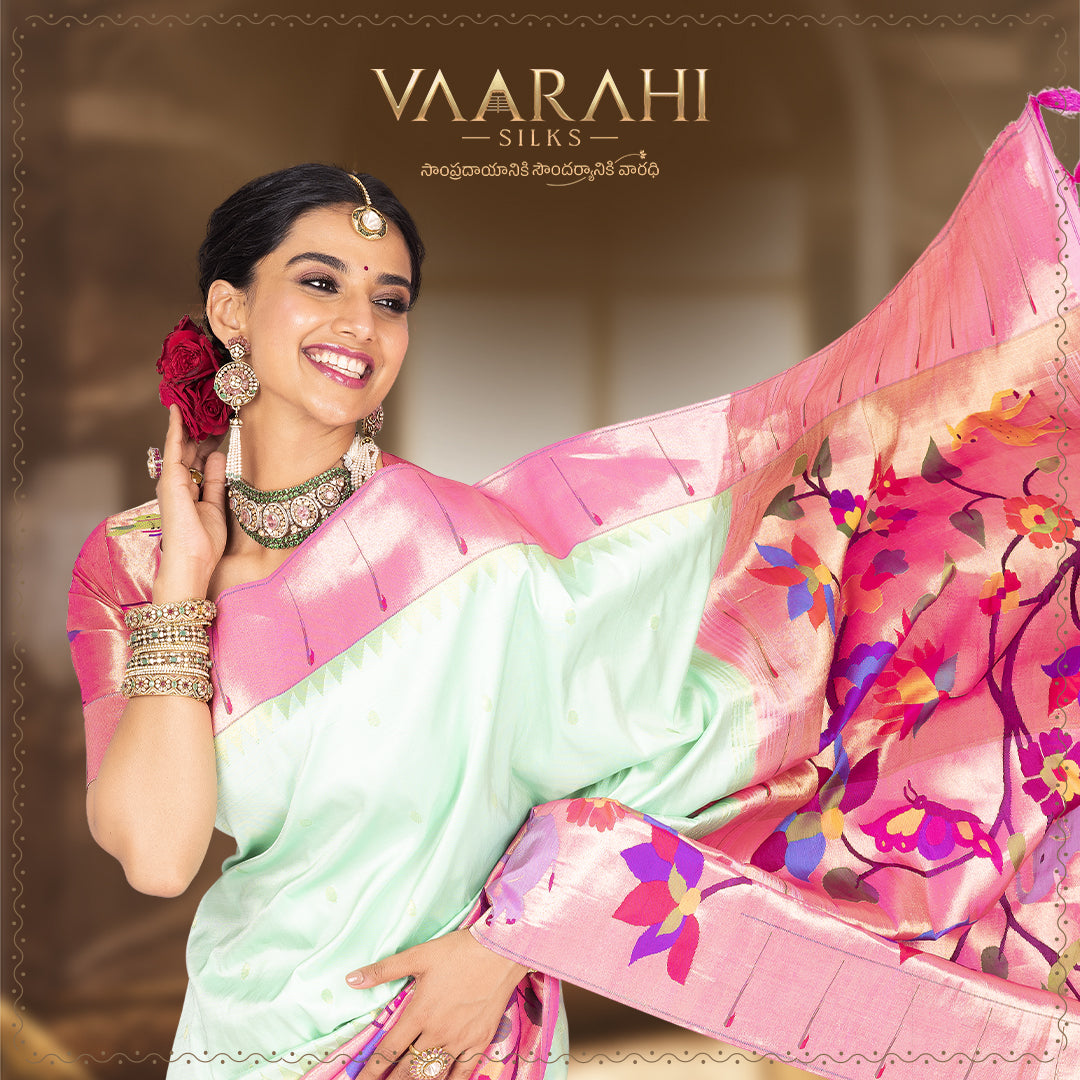
When you think of regal, timeless sarees that carry centuries of heritage, Paithani sarees stand in a class of their own. These sarees are not just garments — they are living legacies, woven with gleaming zari, rich silk, and motifs drawn from nature, myth, and royalty. For any saree lover, owning a paithani silk saree is akin to owning a treasure of art, tradition, and craftsmanship. In this blog, we explore the history, significance, design varieties, and tips for buying paithani sarees online, all while emphasizing how to pick the right one for weddings, festivals, and heirloom use.
The Rich History & Heritage of Paithani Sarees
Origins & Early Beginnings
The name “Paithani” comes from Paithan (anciently Pratishthan), a historic town near Aurangabad in Maharashtra. The roots of Paithani weaving date back to the Satavahana dynasty period (2nd century BCE) when silk and gold-thread weaving were patronized by royal courts.
Over centuries, Paithani weaving evolved under various influences — from the Yadavas and medieval Maratha eras to the Peshwas and the Nizams.

Royal Patronage & Cultural Symbolism
Historically, Paithani sarees were luxurious garments reserved for queens and nobility. In fact, ancient trade records suggest that Greek and Roman traders exchanged gold for exquisite Paithani fabrics in earlier times.
During the Peshwa era, weaving techniques, motifs, and color palettes flourished. It is believed that the Nizam of Hyderabad was also fascinated by Paithani sarees, and royal women occasionally introduced innovations in motifs and borders.
Thus, Paithani represents not only a textile but a thread that weaves together regional pride, craftsmanship, royal taste, and cultural continuity.

What Makes a Paithani Saree Distinctive?
To truly appreciate a paithani silk saree, one must understand its structural, aesthetic, and motif elements.
Key Components & Weaving Technique
- Silk & Zari: Traditional Paithanis use mulberry silk (often from Bangalore / Mysore) as the base and zari (silver or gold-coated threads) for motifs and borders.
- Tapestry / Interlocking Weft Weaving: This technique ensures that motifs are visible on both sides of the saree (front and back), adding durability and quality.
- Kath (Borders) & Padar (Pallu / Endpiece): The border (kath) and the pallu (padar) are the signature areas — richly decorated, with motifs often mirrored and aligned.
- Body / Buttis: The main body may be plain silk or decorated with small motifs (buttis). Some Paithanis are “all-over” designs, while others balance motifs and open silk.
Motifs & Designs
Paithani motifs reflect nature, mythology, and symbolic imagery. Common motifs include:
- Peacock (Mor)
- Parrot (Muniya)
- Lotus (Kamal)
- Hans (Swan)
- Asawalli (flowering vines)
- Ashraffi (geometric floral lattice)
- Amarvell (inverted lotus)
- Popat-Maina
- Floral sprays, kalash, stars, chandrakor
Especially in the pallu (padar), you will often find peacocks, floral patterns, symmetrical vine work, and other dense embellishments.

Colors & Dyeing
The color palette in traditional Paithani sarees is vibrant and rich. Dyes historically were from vegetable sources. Signature colors include:
- Peacock greens
- Royal reds
- Deep purples
- Saffron / yellow
- Blues
- Pastel combinations

Some Paithanis use a “kaleidoscopic” technique where the warp and weft use different colored threads, giving subtle color shifts across light and angles.
Weight & Fabric Feel
A typical Paithani saree is heavier than ordinary silk sarees due to the dense weaving and heavy zari. Depending on the intricacy, a Paithani may weigh between 900 g to 1,500 g (or more) for full “all-over” versions.
Popular Paithani Saree Designs & Variants
When browsing paithani sarees designs, you’ll come across various types. Some of the well-known variants include:
-
Muniya Border Paithani
The border is adorned with a line of parrot motifs (often in green body with red beaks). These are elegant and moderately priced compared to all-over weaves.
-
Double / Triple Muniya Border Paithani
Enhanced complexity by having double or triple rows of parrots — this raises weaving time and price.

-
Akruti / Akruthi Border
More geometric, precise border work — often with vine or peacock motifs.
-
Asawali / Floral Vine Border
Border and pallu feature flowering vine designs (Asawalli) with stylized leaves and blossoms.

-
All-over / Jaal Paithani
The most intricate style — motifs cover the entire body, often in tapestry weaving. These are time/resource-intensive and command higher prices.

-
Tissue Paithani
The base is lighter tissue silk (somewhat translucent) with zari motifs — for those wanting a lighter drape but wanting the Paithani look.
-
Fusion / Contemporary Paithani
Some modern designers incorporate unconventional motifs or colors (zebra, abstract shapes, temple art) to appeal to new-age buyers.

-
9-yards / Nauvari Paithani
In Maharashtrian style, sometimes Paithani sarees are customized to be 9 yards (nauvari) instead of standard 6 yards.

Each design variant has its own aesthetic appeal, weaving complexity, and price bracket.
Why Paithani Sarees Are Ideal for Weddings & Festivals
- Heritage & Heirloom Worth: A Paithani isn’t just a saree; it becomes a family heirloom. Many brides treasure passing down their Paithani.
- Depth & Texture: The rich silk and zari interplay beautifully in photography and festive light.
- Symbolic & Cultural Value: Especially in Maharashtrian weddings, Paithani is traditional bridal attire.
- Versatility: It can be draped in classic style or styled more modernly (with accessories, drape tweaks) to suit personal taste.
- Durability: When well-made, the tapestry-style weaving ensures longevity.
Tips for Buying Paithani Sarees Online
Given the high value and fine craftsmanship involved, buying paithani sarees online requires diligence. Here’s a checklist:
- Authenticity Verification
- Check that the motifs appear on both sides (front and back) owing to tapestry weave.
- Inspect close-up images of the border, pallu, and motifs.
- Ask for dye & zari certification or Silk Mark / GI tags (if available).
- Check the reputation of the seller and reviews from past buyers.
Detailed Product Photos & Close-ups
-
- Zoom-ins of motifs, border, back-side, fall & finish.
- Real-life drape photos (on model).
- Videos or 360° views help.
-
Weight & Fabric Description
- Sellers should list weight in grams or fiat.
- The description should note the silk’s source, zari type, weave style.
-
Return / Exchange Policy & Assurance
- Because it’s a high-ticket item, ensure the seller allows inspection or returns in case of discrepancy.
-
Design / Custom Options
- Some sellers offer customization: border width, motif color, or adding/removing certain motifs.
-
Shipping & Packaging
- Paithani sarees must be packed in acid-free paper, muslin wraps, and sturdy boxes — to avoid creasing or damage.
-
Price vs Value Benchmarking
- Compare different sellers for the same motif variant.
📲 Call / WhatsApp Us: +91-9000454411 / +91-9100003343
🌐 Website: https://vaarahisilks.com
👉 Follow - https://vaarahisilks.com/collections/bridal-sarees
👉 Follow - https://vaarahisilks.com/collections/banaras-silks-sarees
👉 Follow - https://vaarahisilks.com/collections/paithani-sarees
👉 Follow - https://vaarahisilks.com/collections/bridal-sarees
Vaarahi Silk STORE LOCATIONS :
📍Vaarahi Silks Jubilee Hills
Vaarahi Silks, Road No. 36, opp.
Metro Pillar # C1604, Jubilee Hills, Hyderabad,
Telangana 500033
Map: https://share.google/GyvPzx53nUu2YaJtR
📍 Vaarahi Silks KPHB
Vaarahi Silks, Rd Number 1, opp. Metro Pillar A756,
near KPHB Colony, K P H B Phase 1, Kukatpally,
Hyderabad, Telangana 500072
Map: https://share.google/kUaaQxoMGXv2P42Gj
📍 Vaarahi Silks patny center, Secunderabad
Vaarahi Silks, 1-1-100, Rashtrapati Rd, opposite HPO,
Kummari Guda, Kalasiguda, Secunderabad,
Telangana 500003
Map: https://share.google/ytqY5Fu0Ljbj6x8NJ
📍 Vaarahi Silks Nellore
B. V. Nagar, Mini Bypass Road, Nellore, Andhra Pradesh 524003
Map:https://share.google/H2Rak38iuC9bPd9Me




